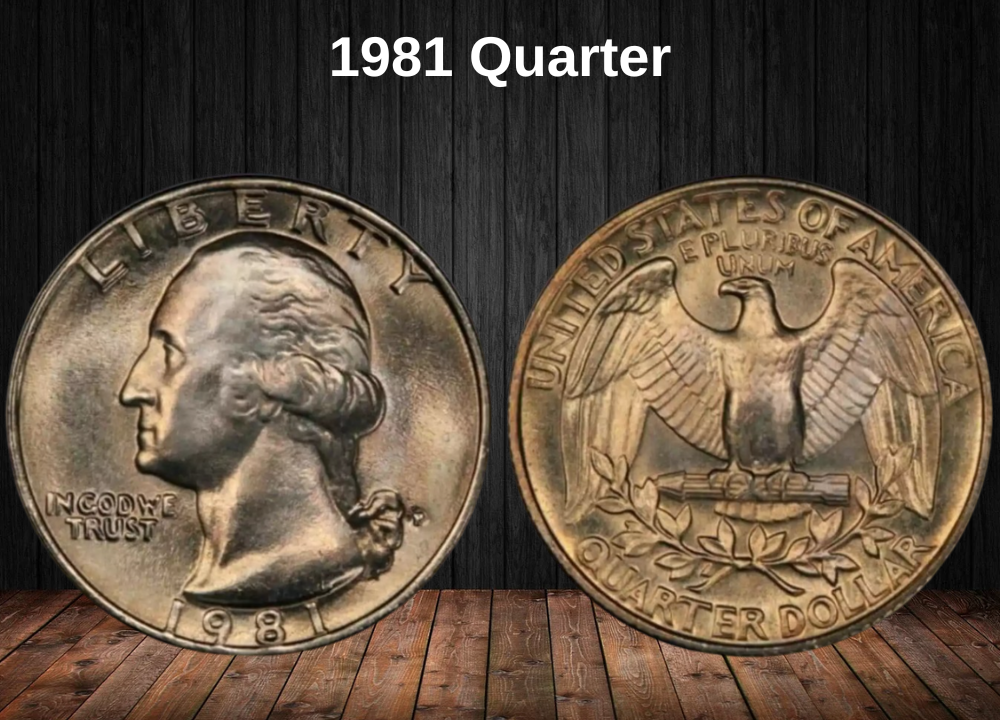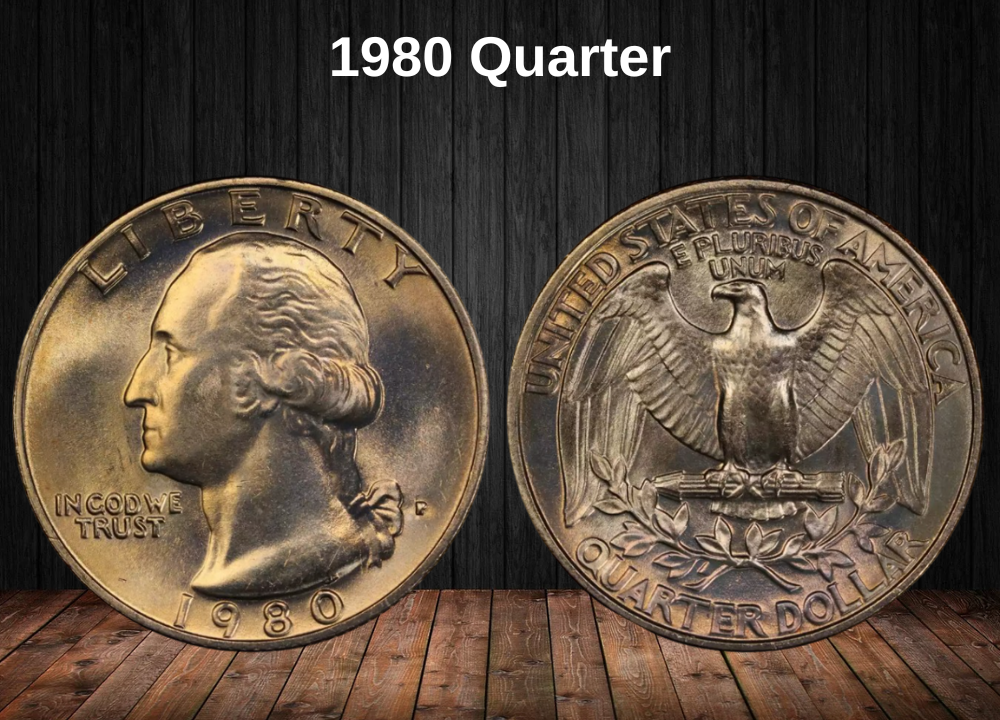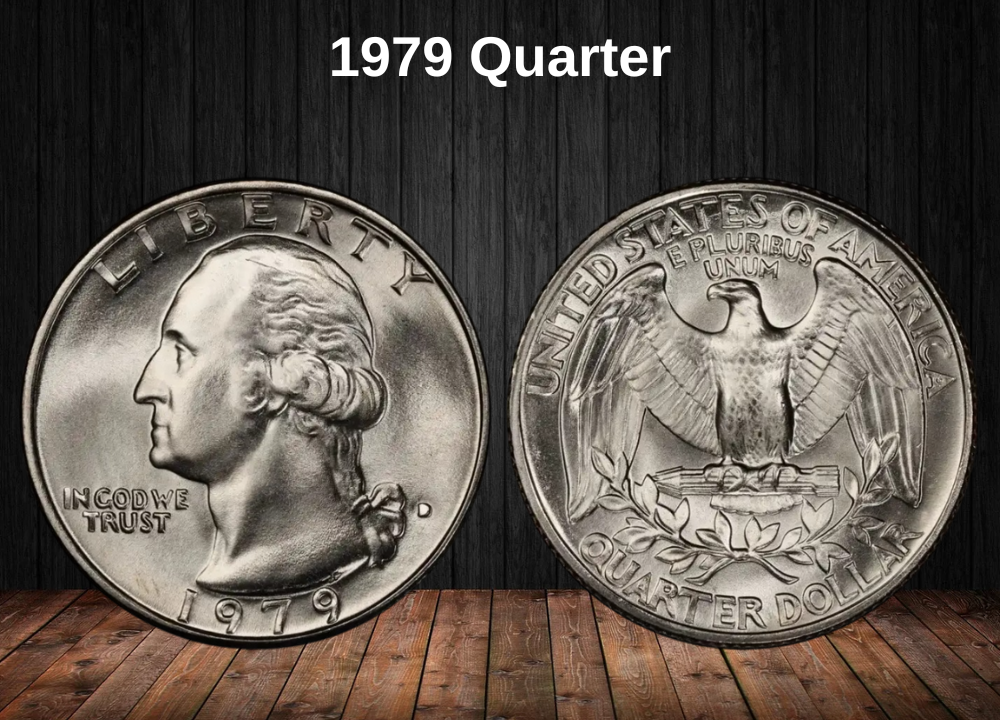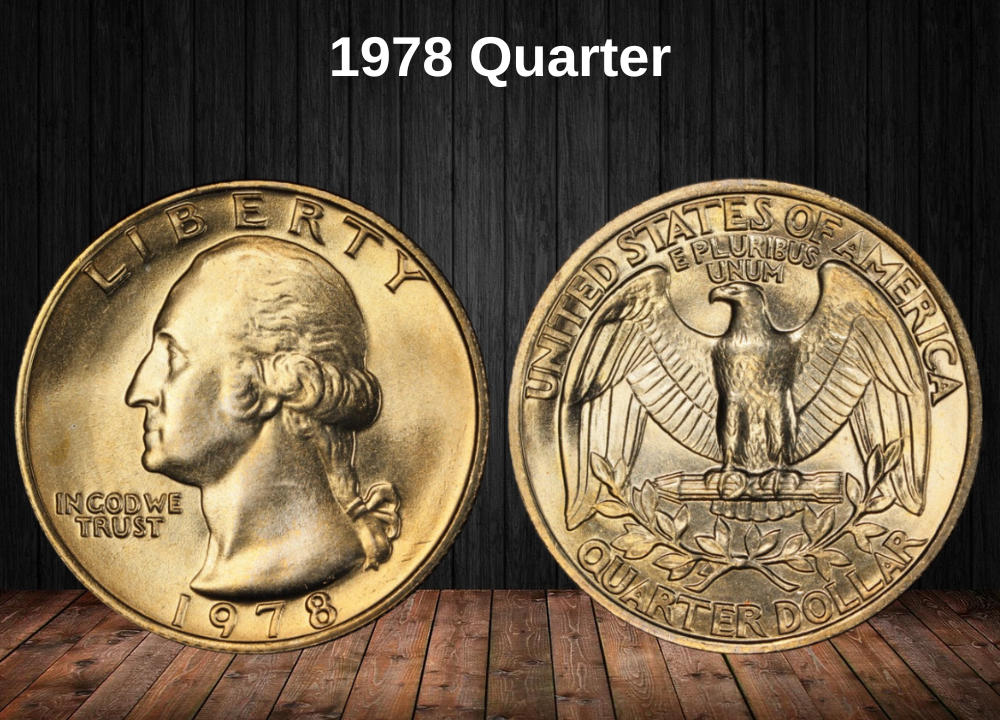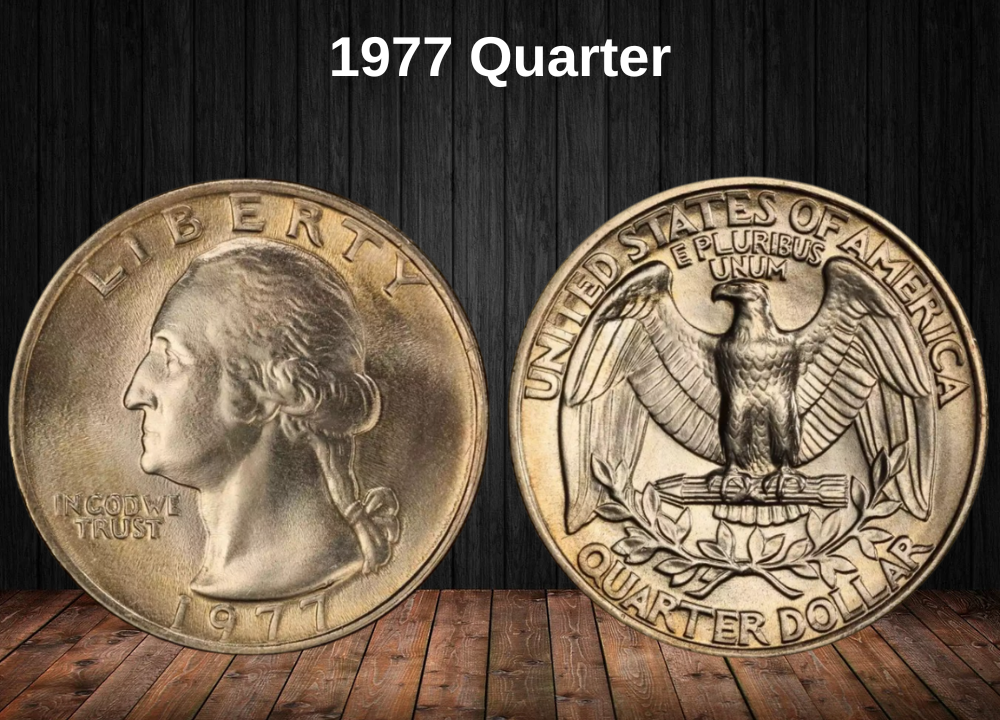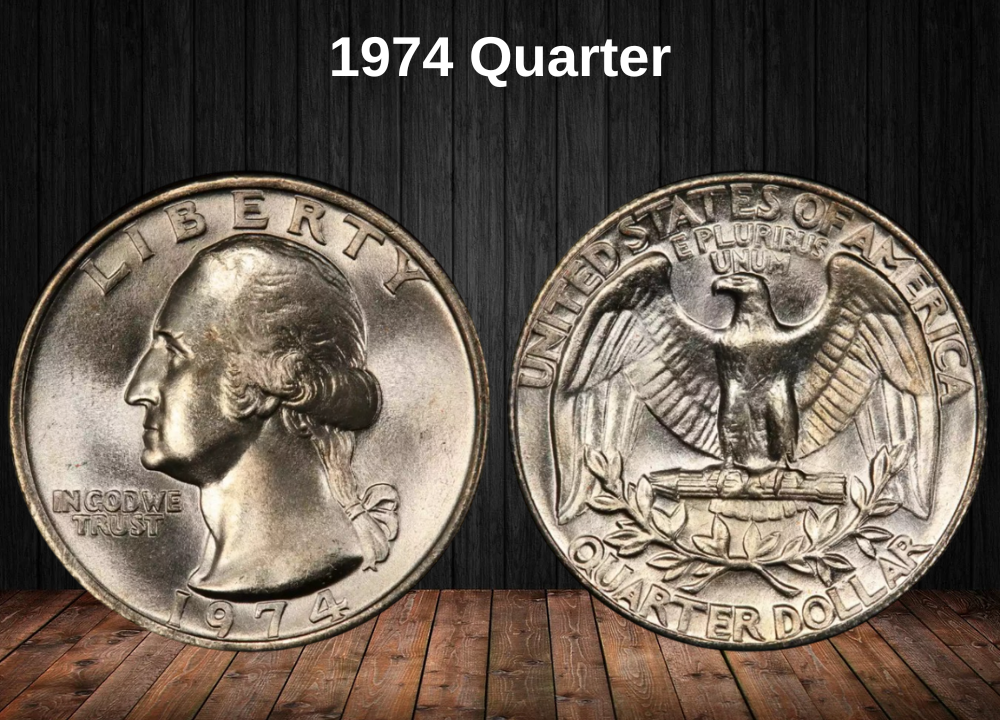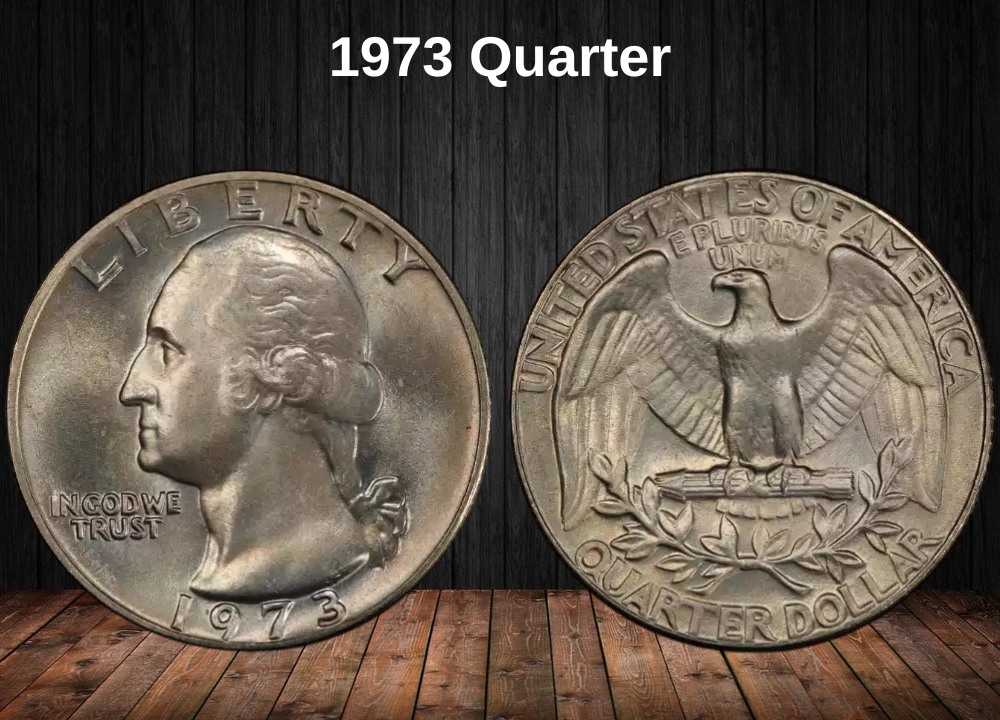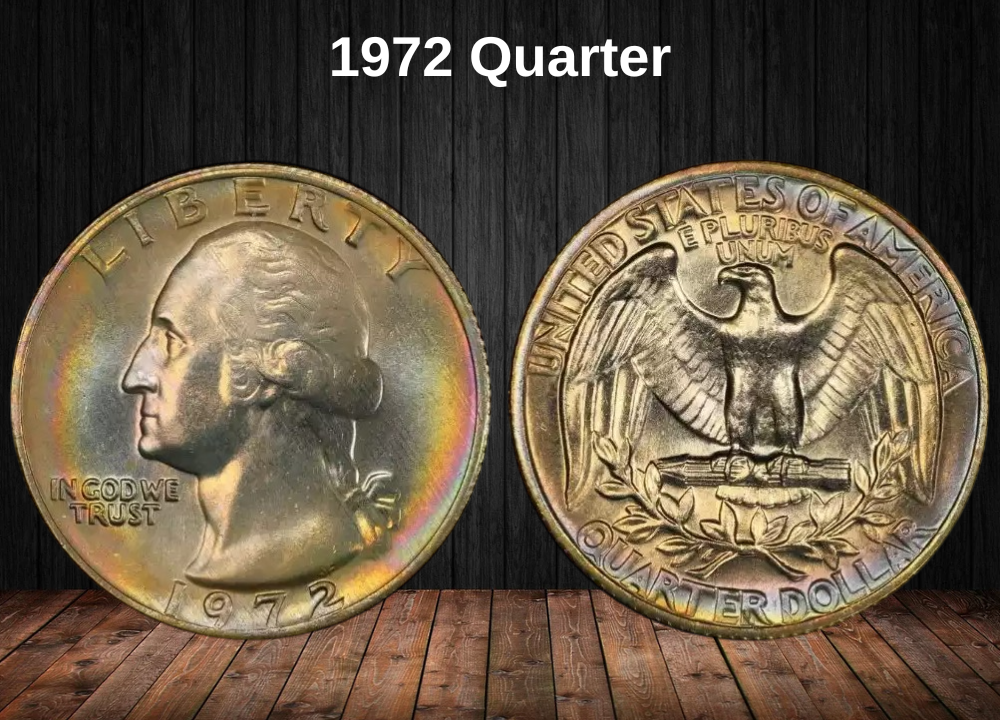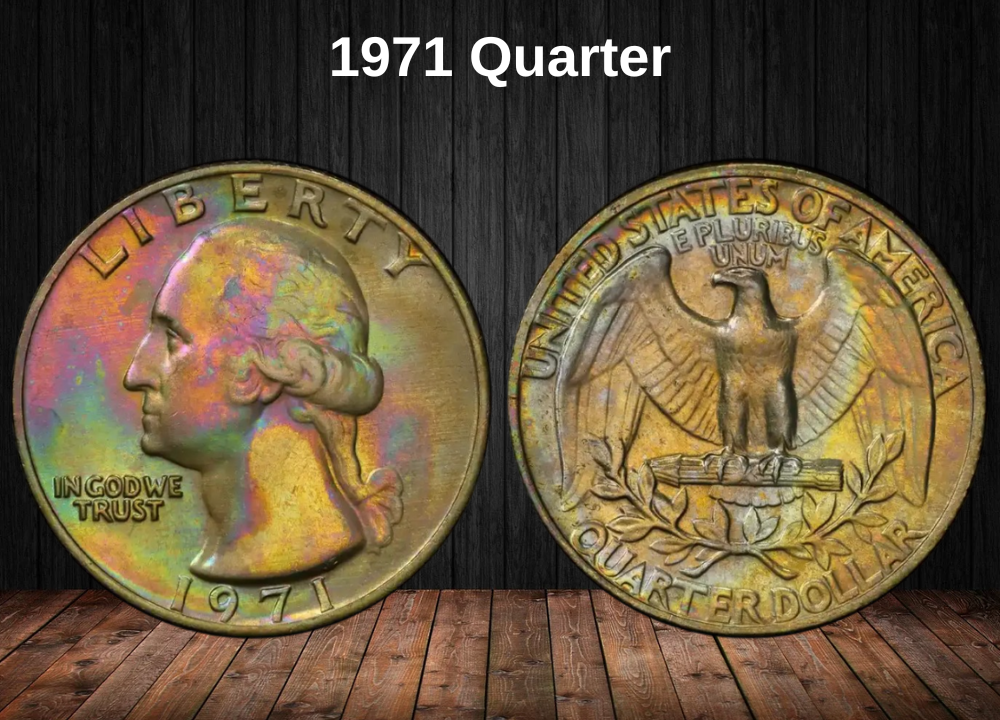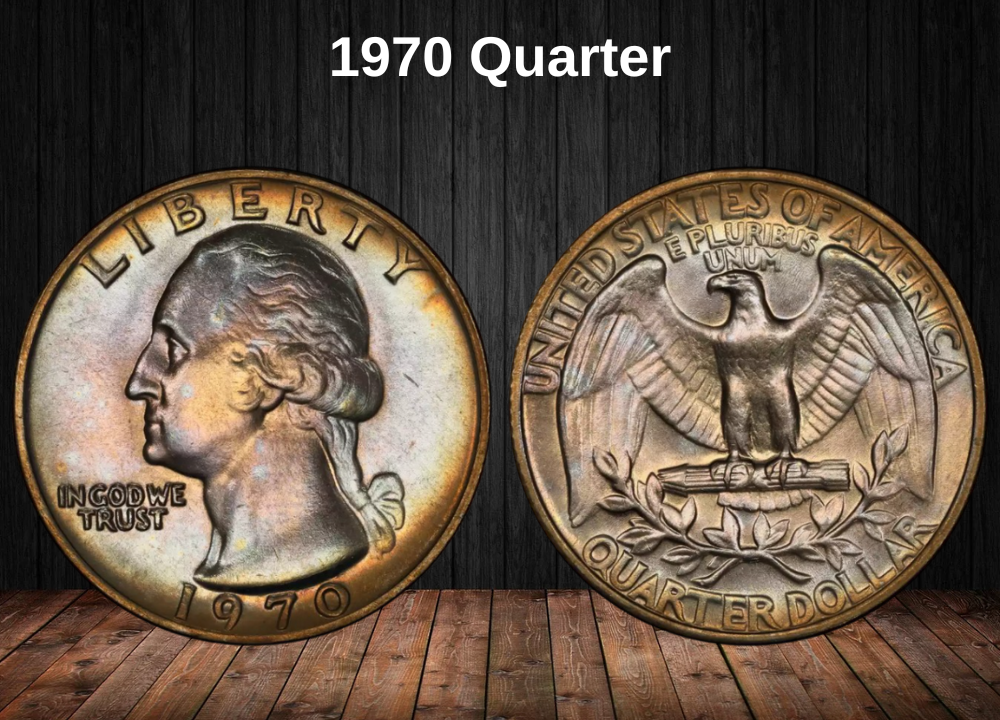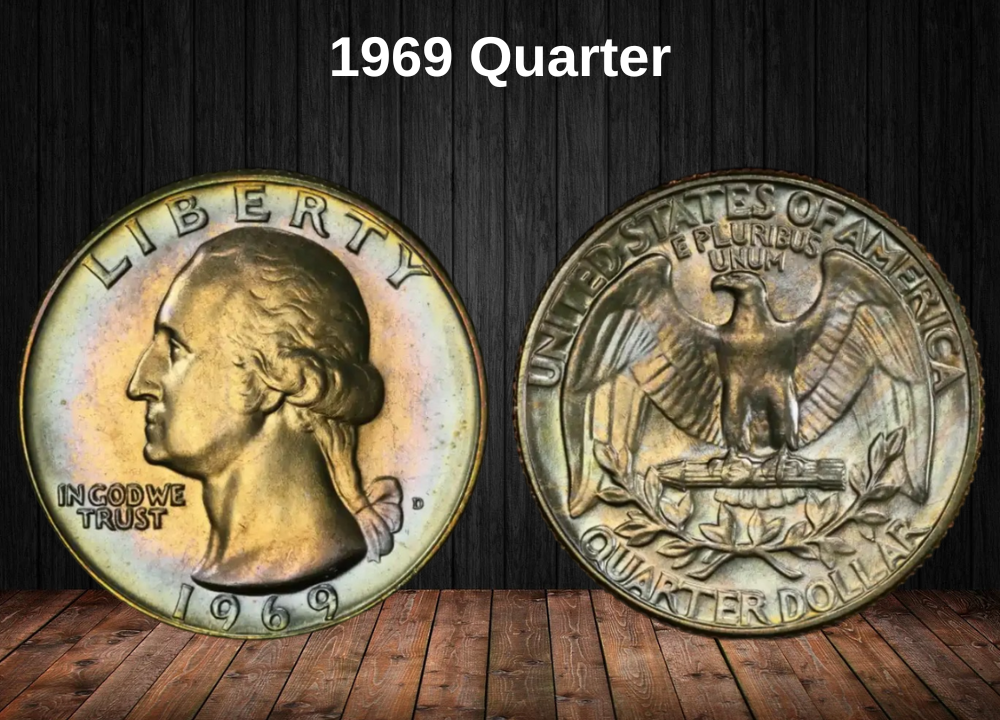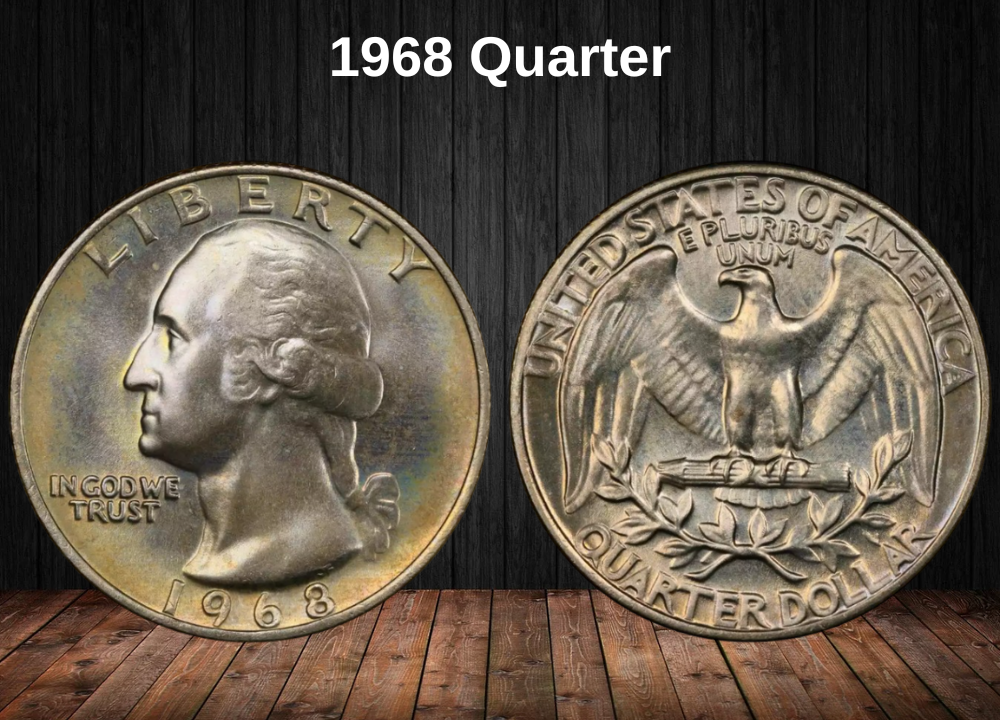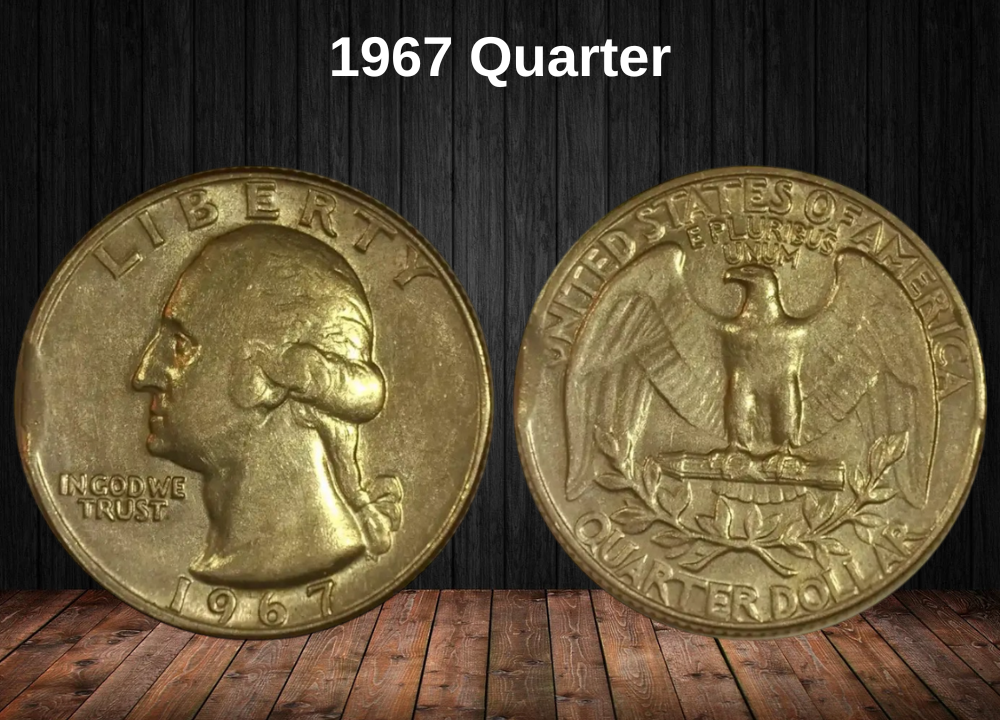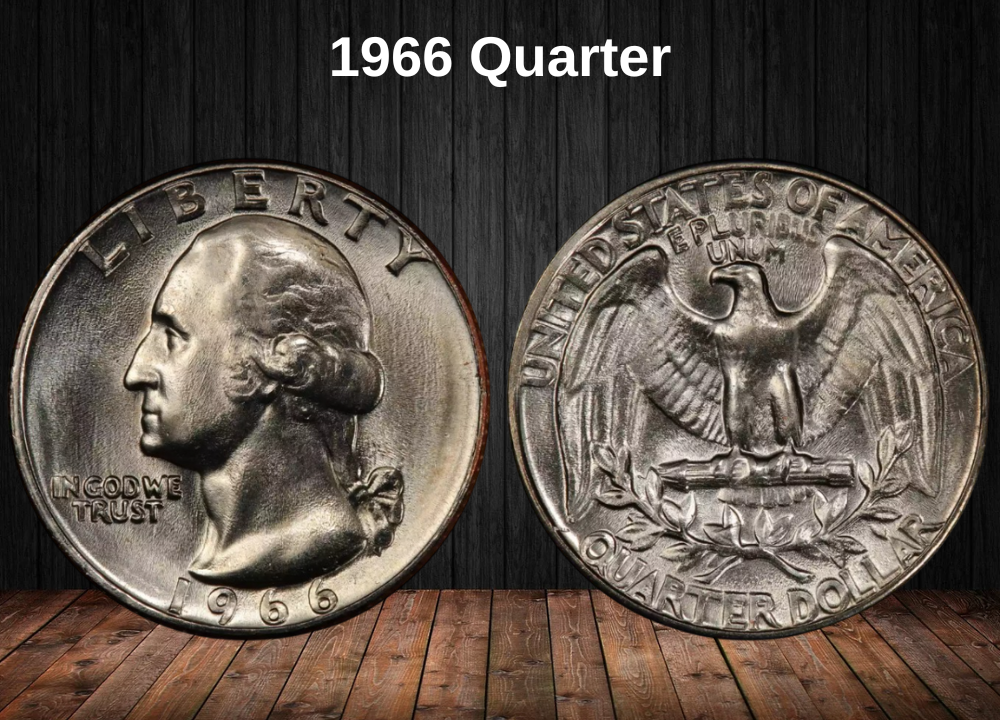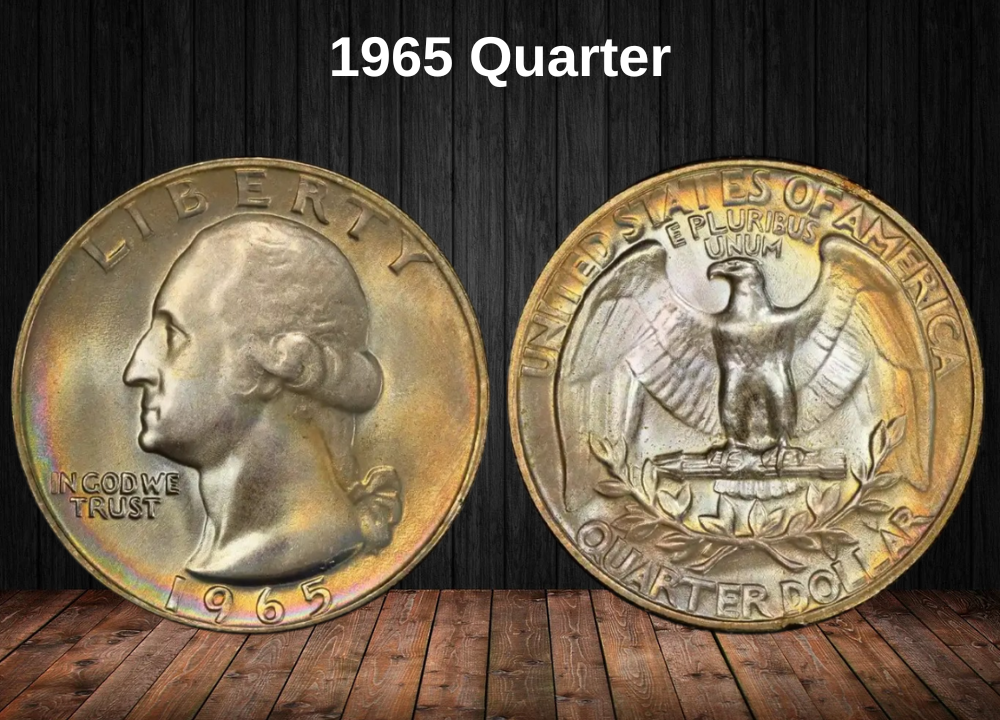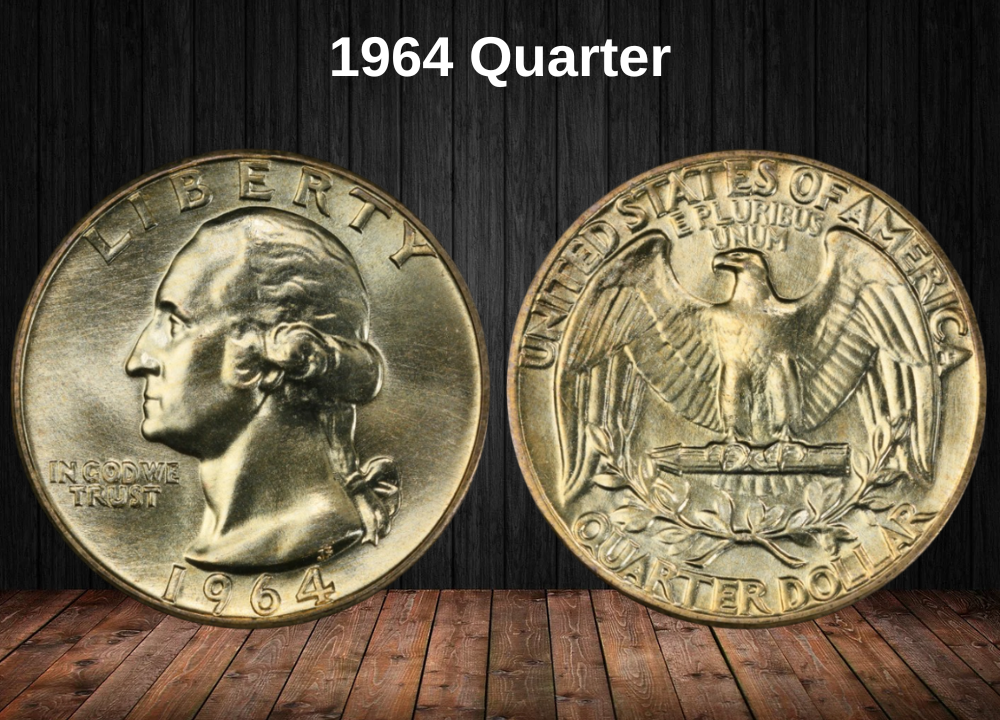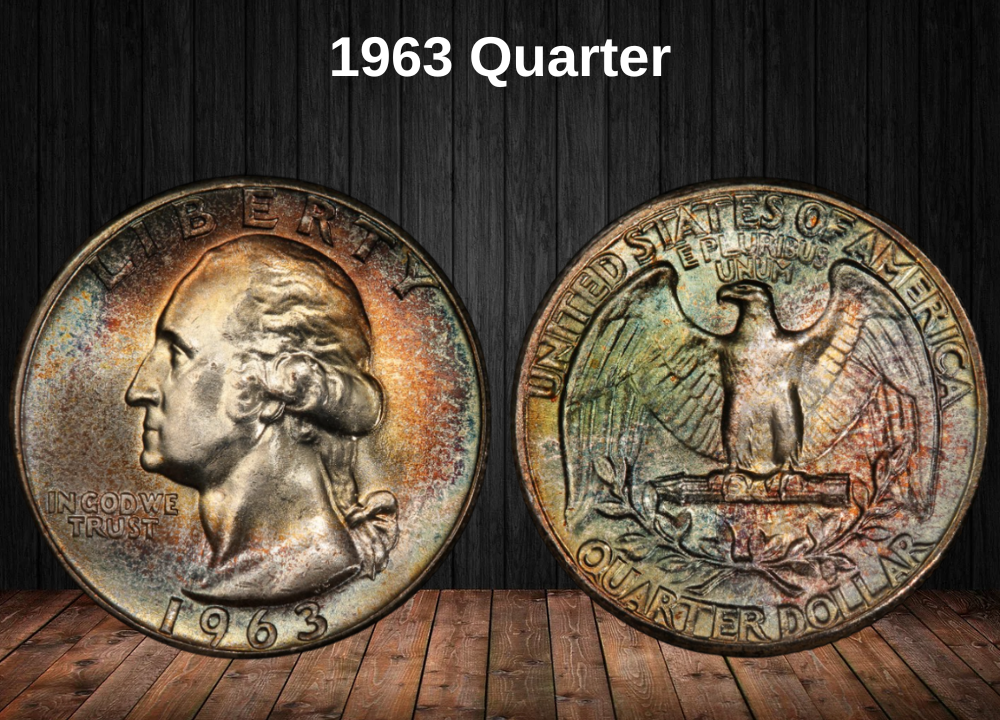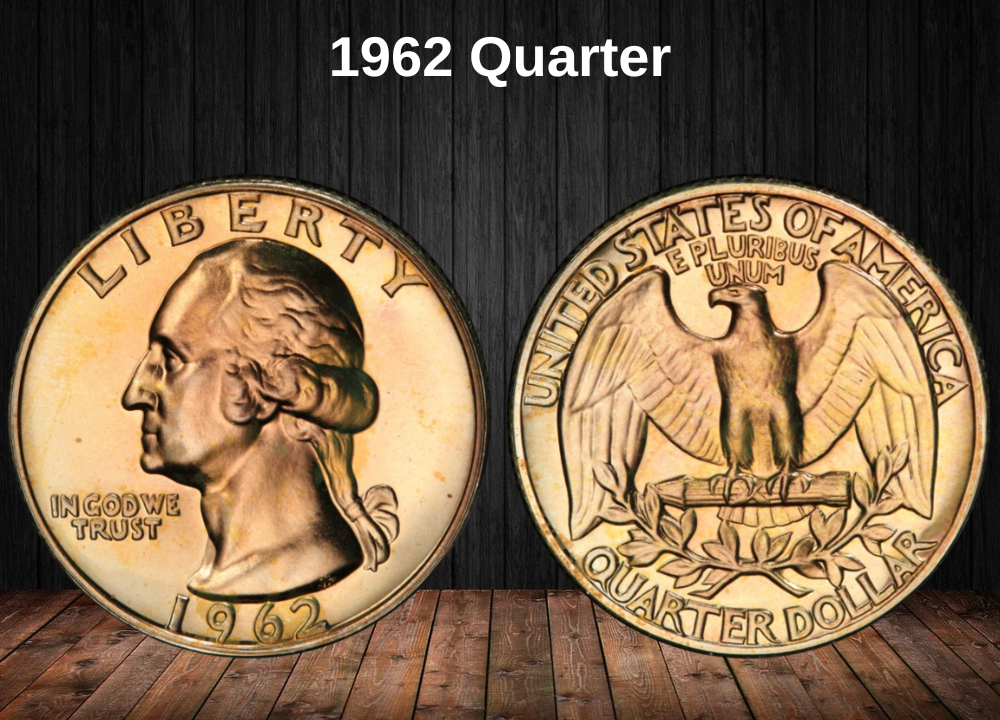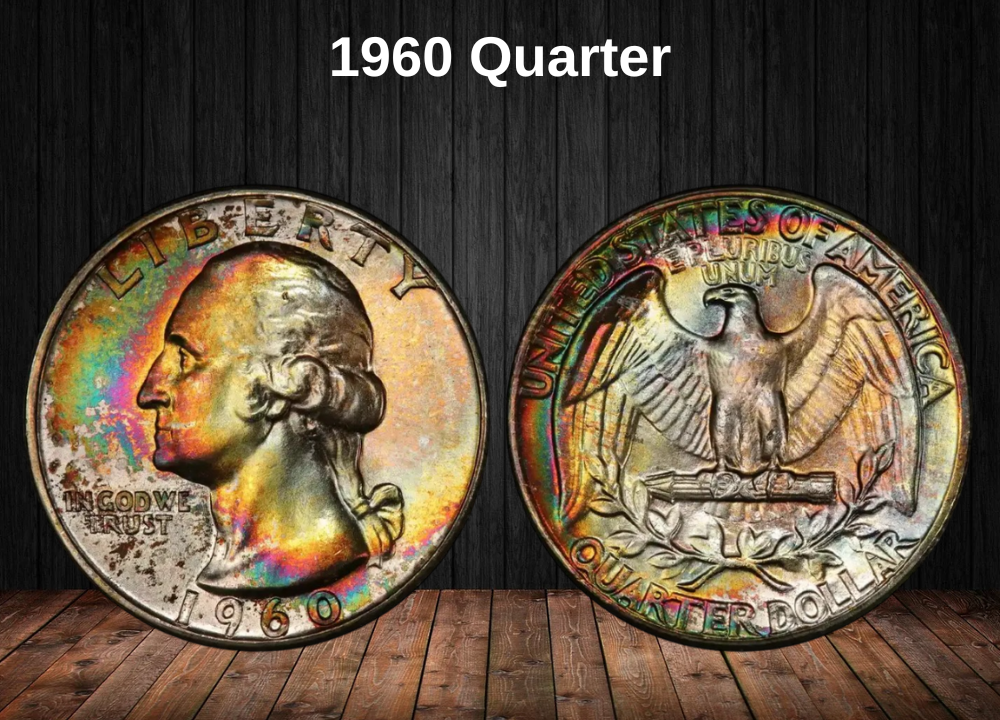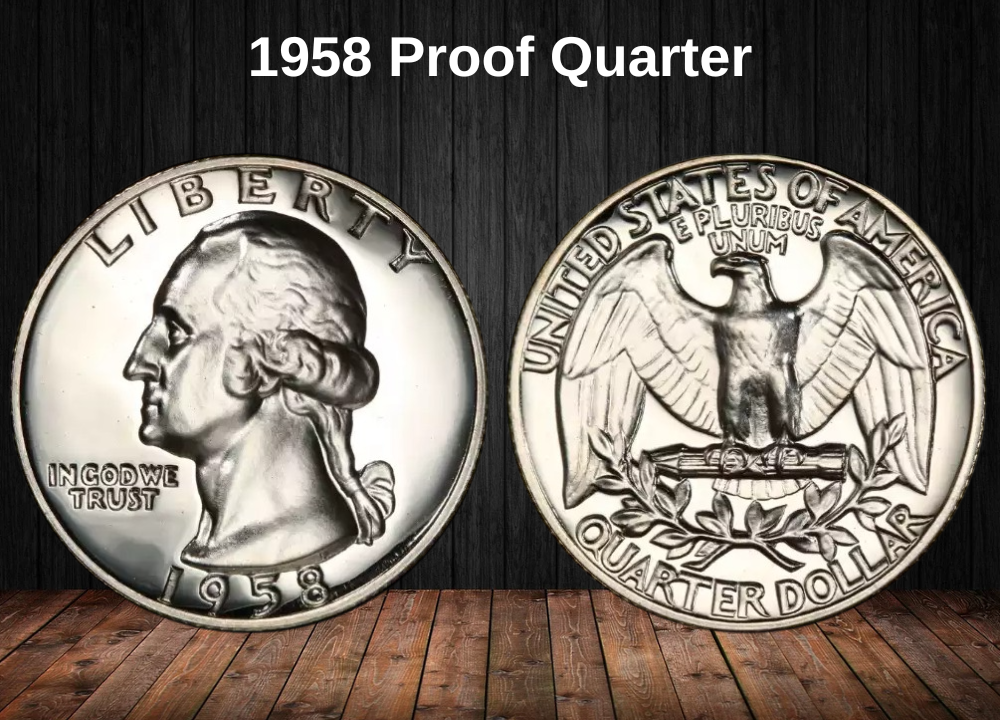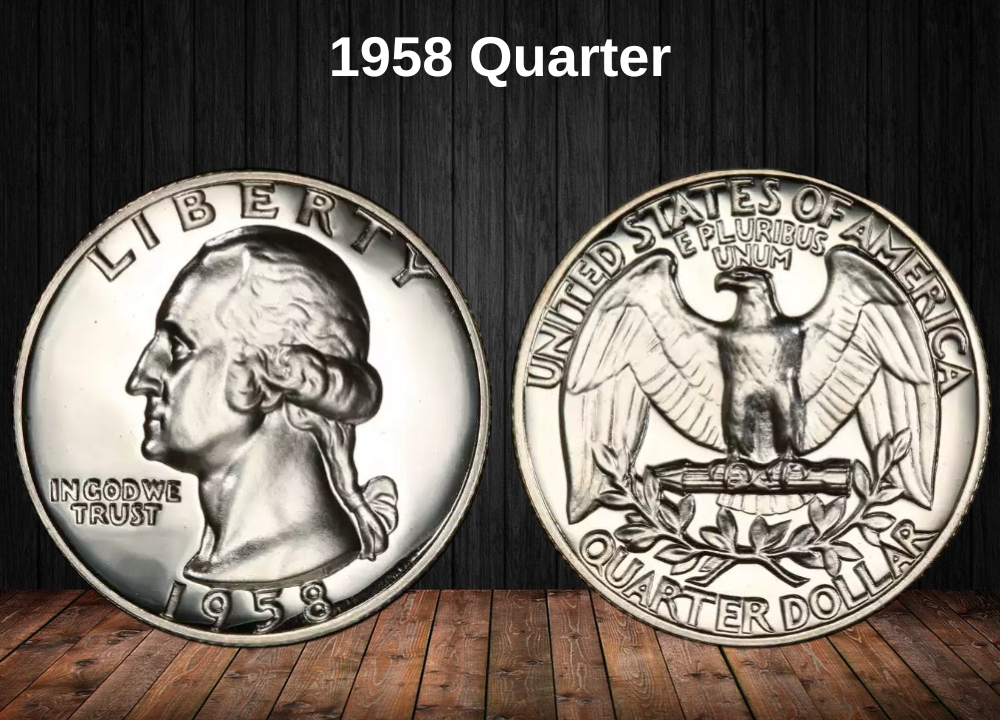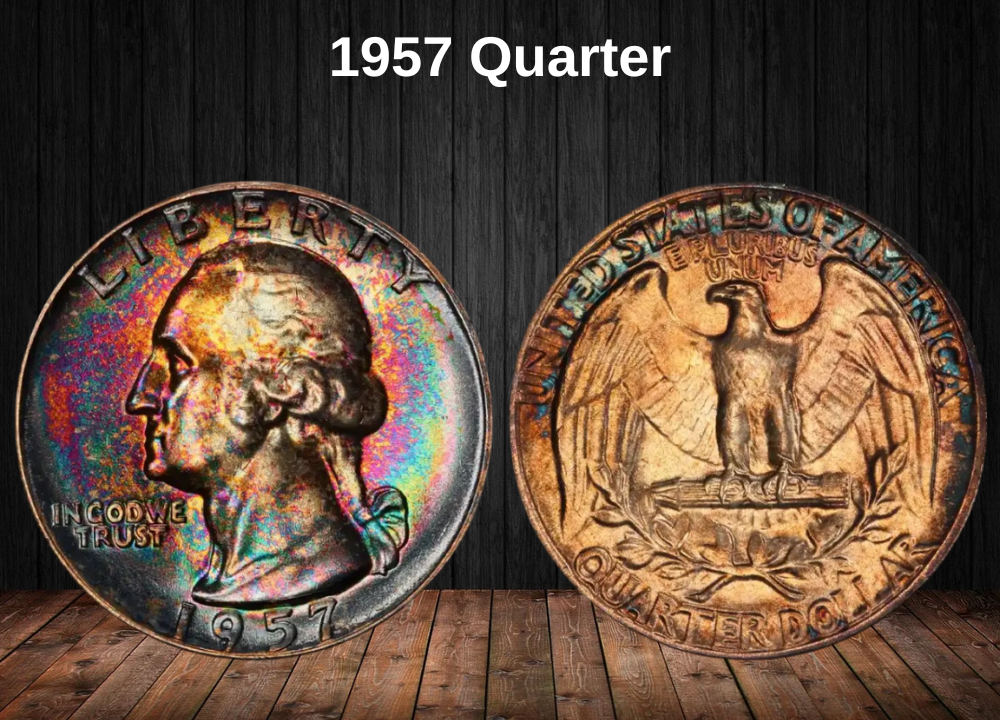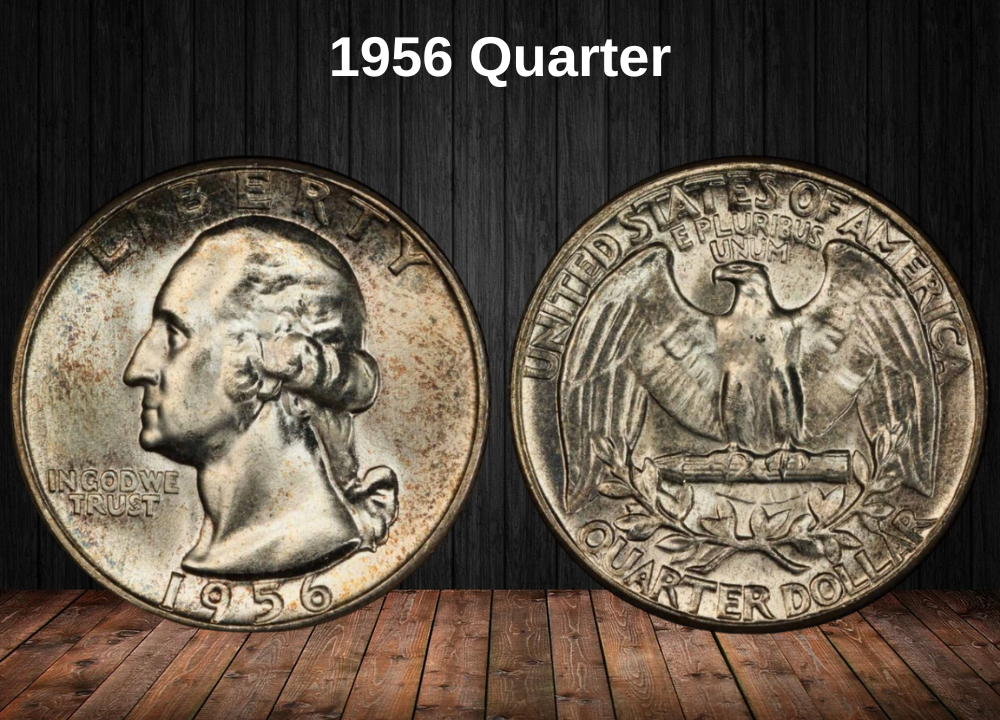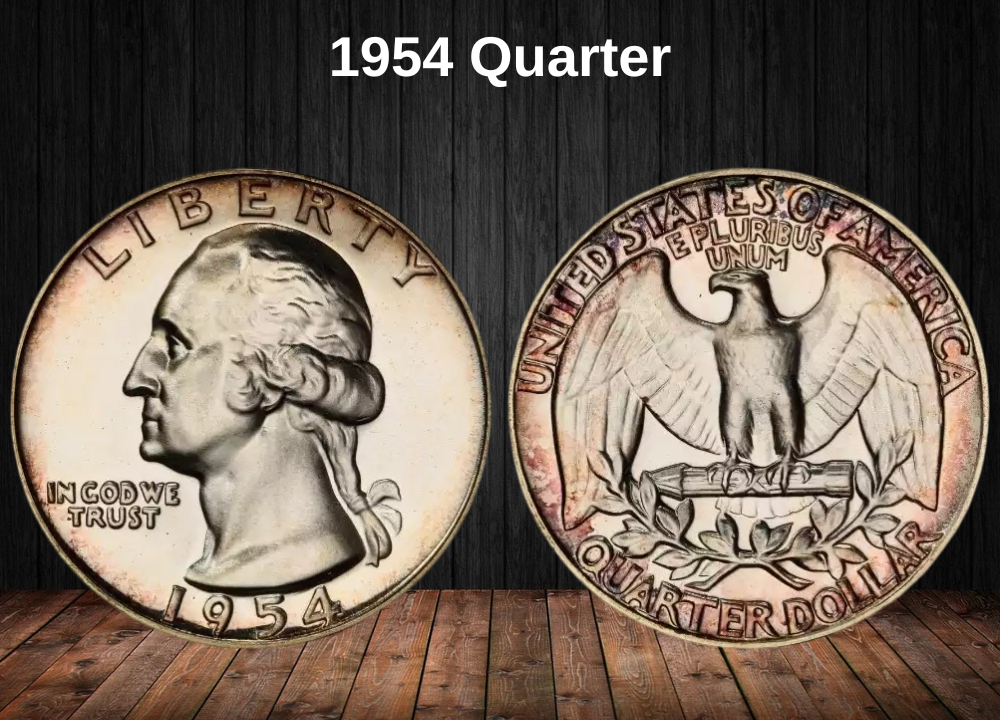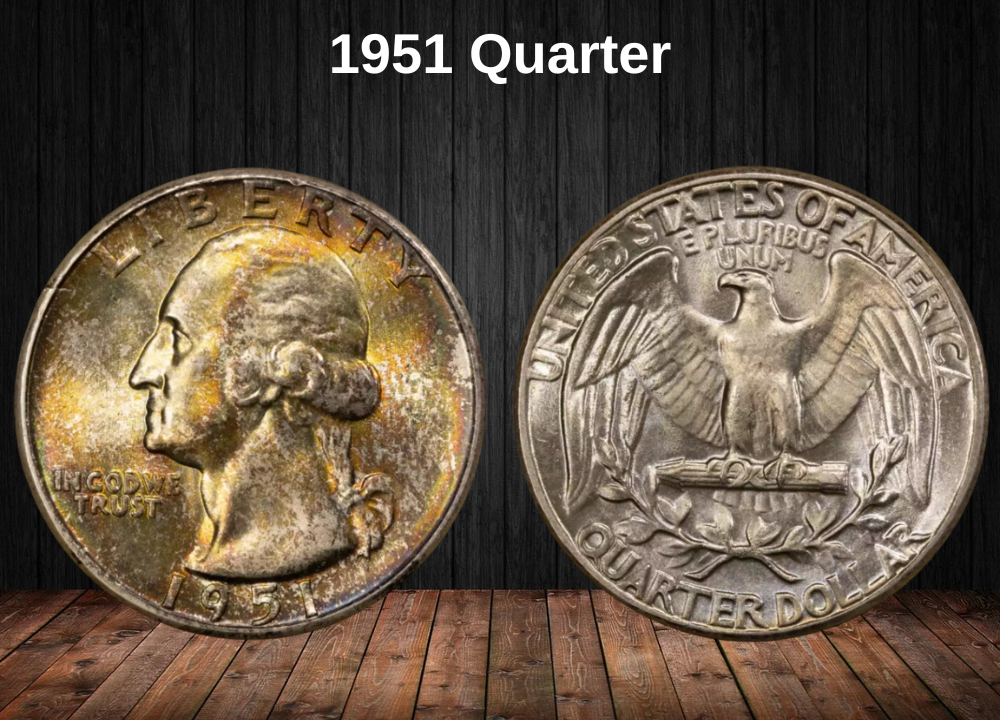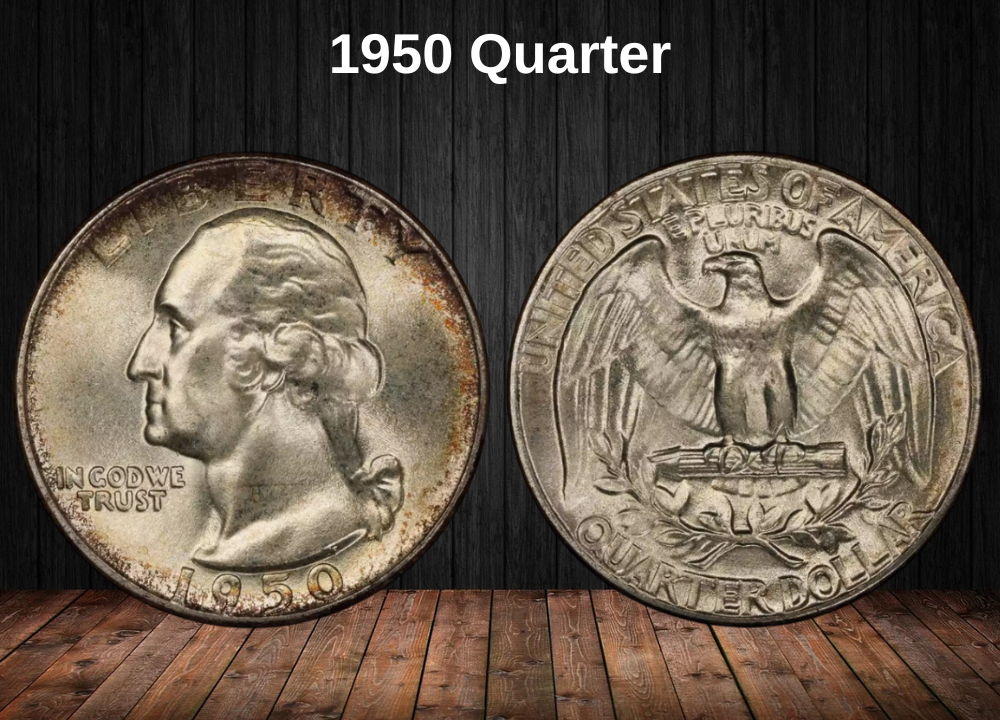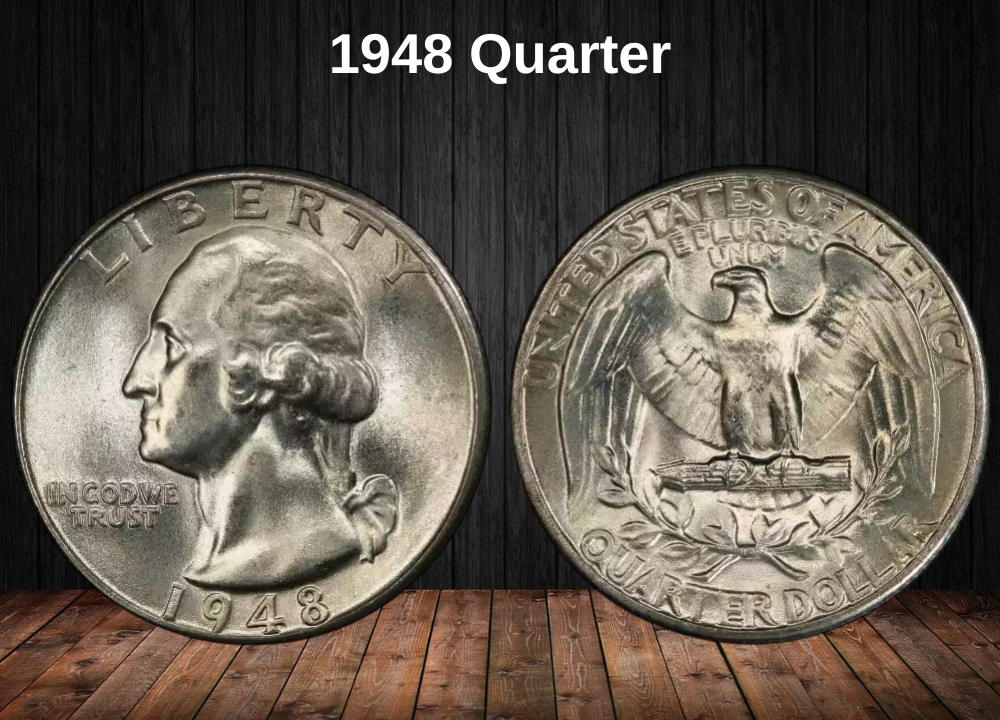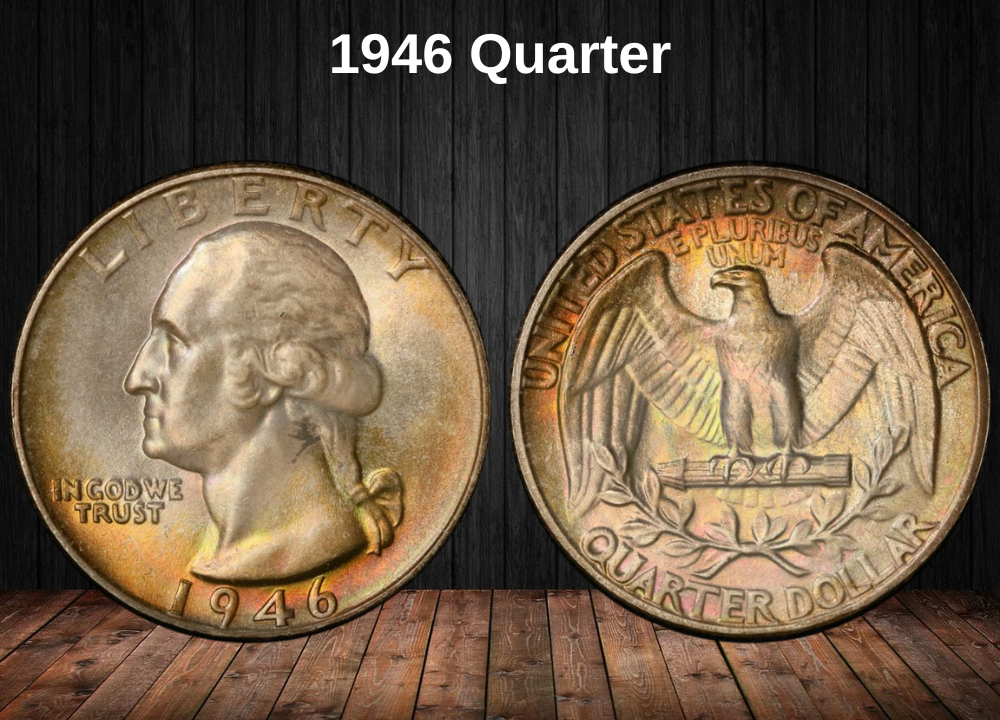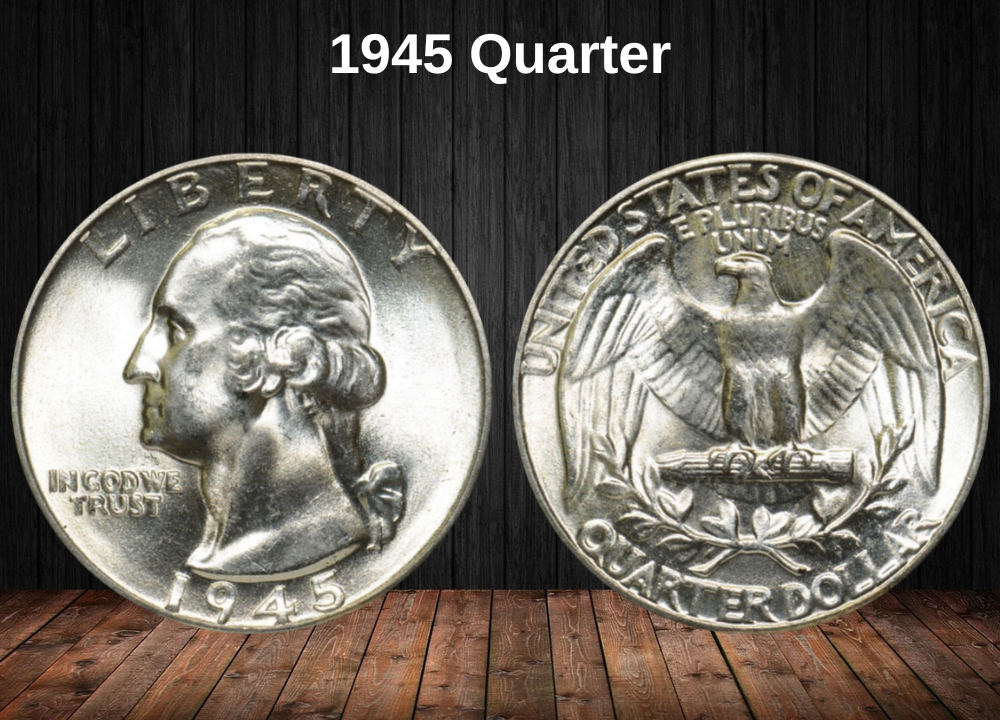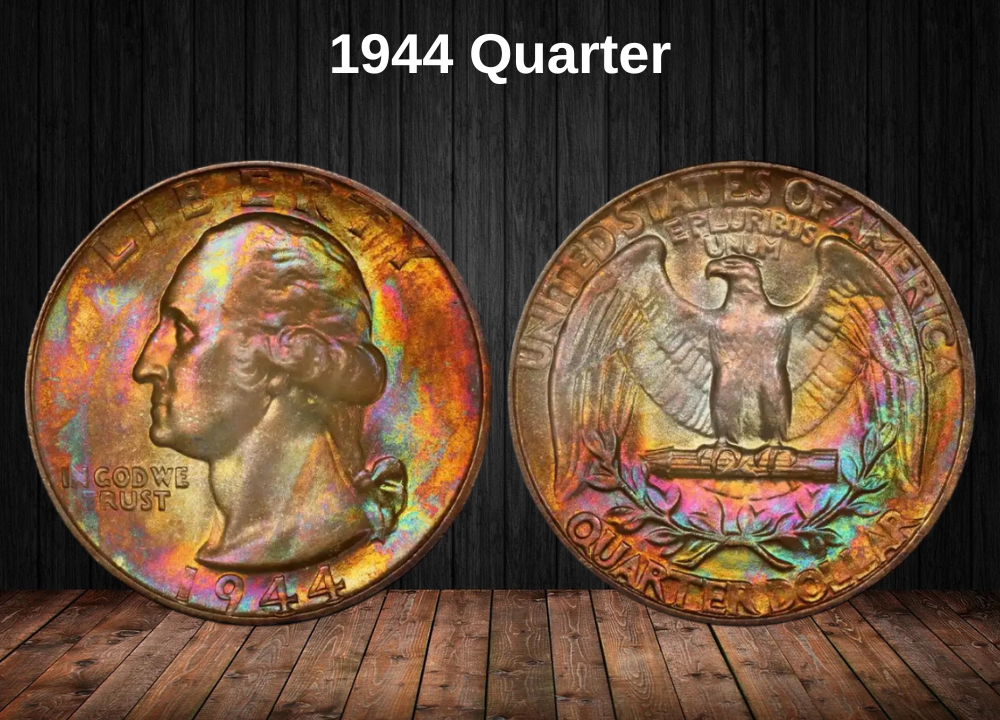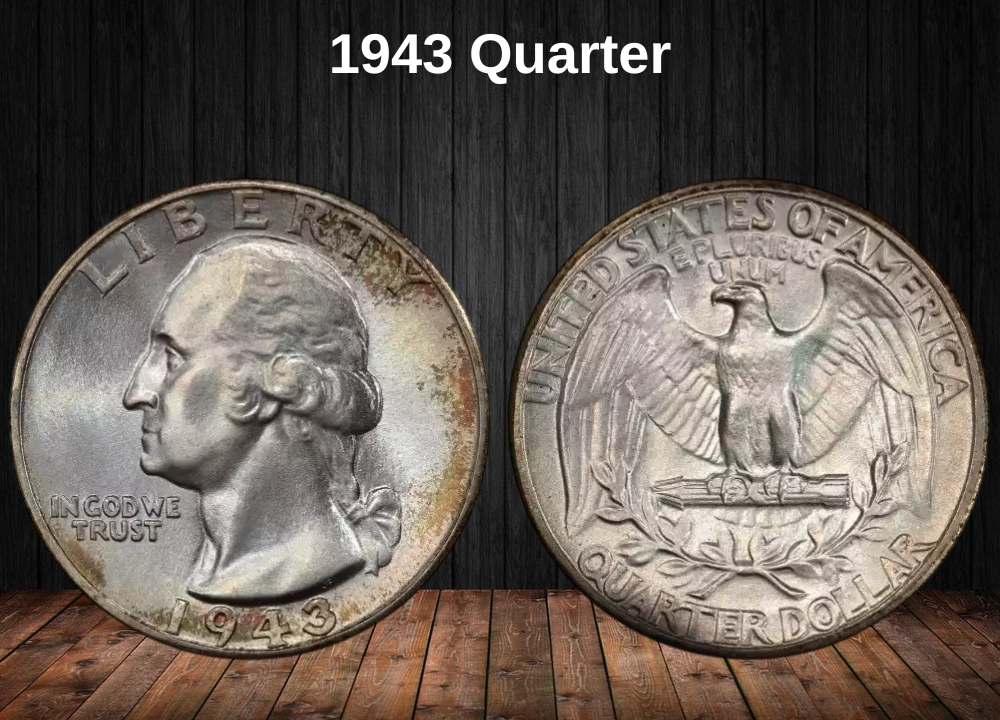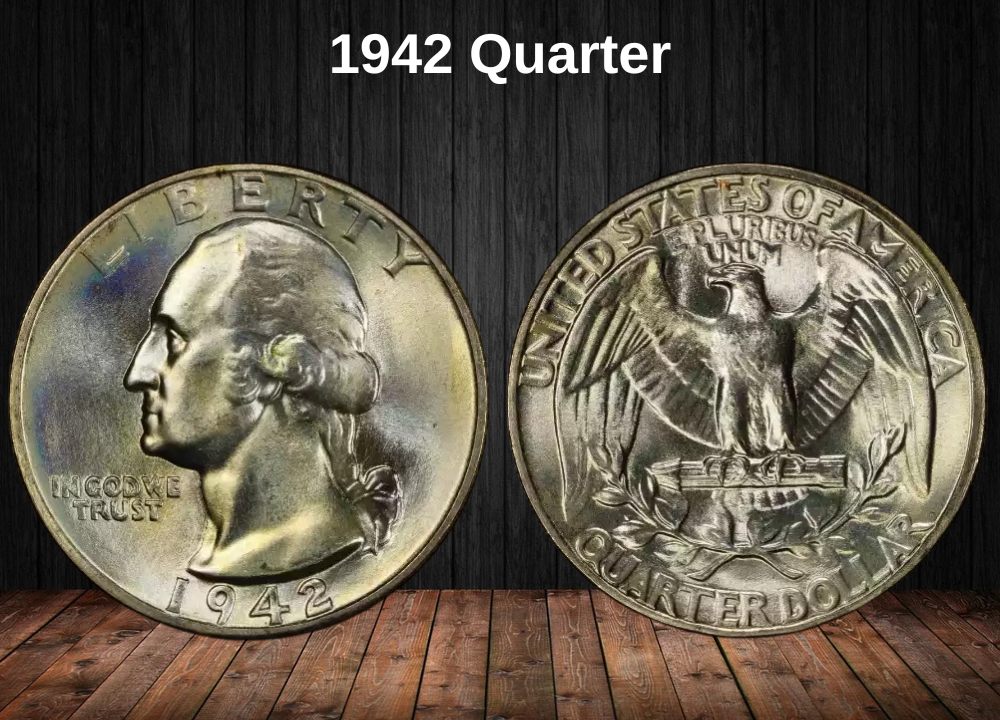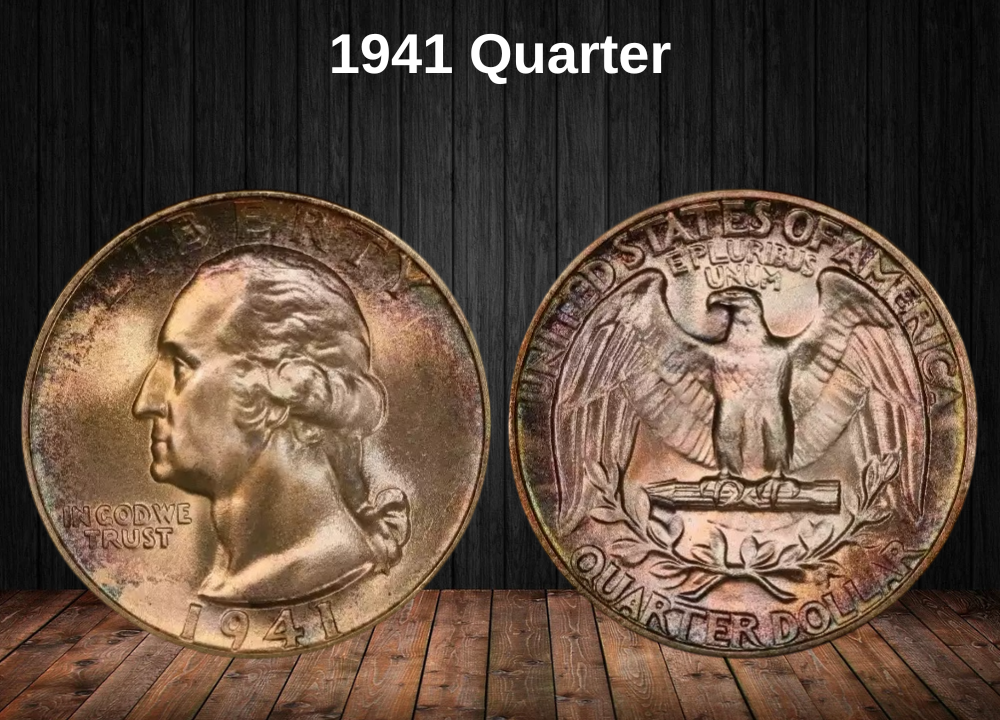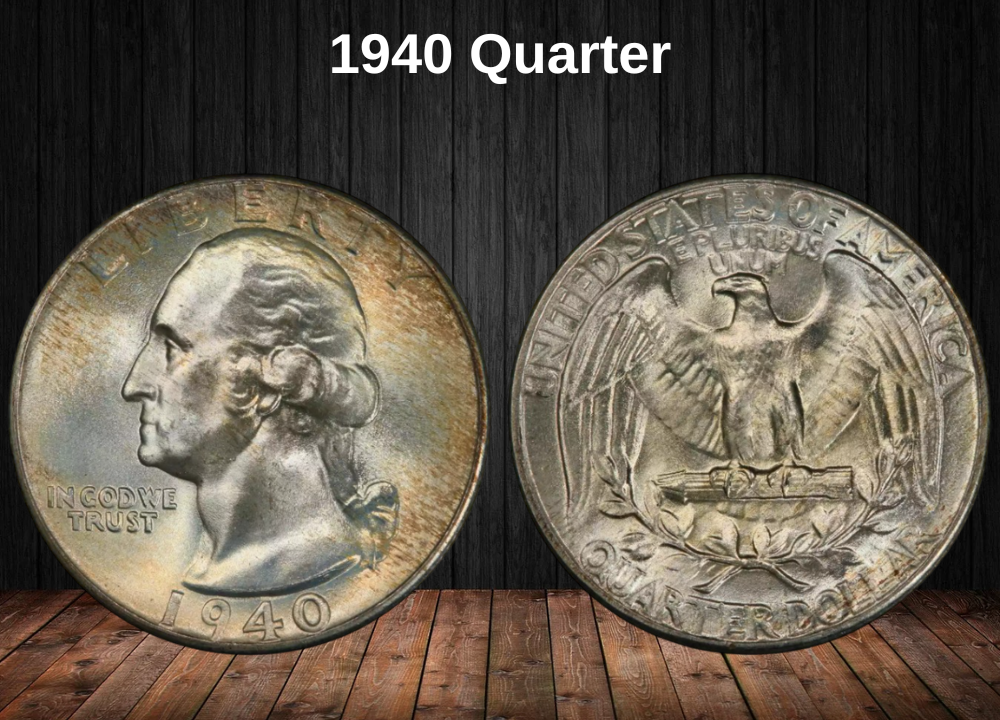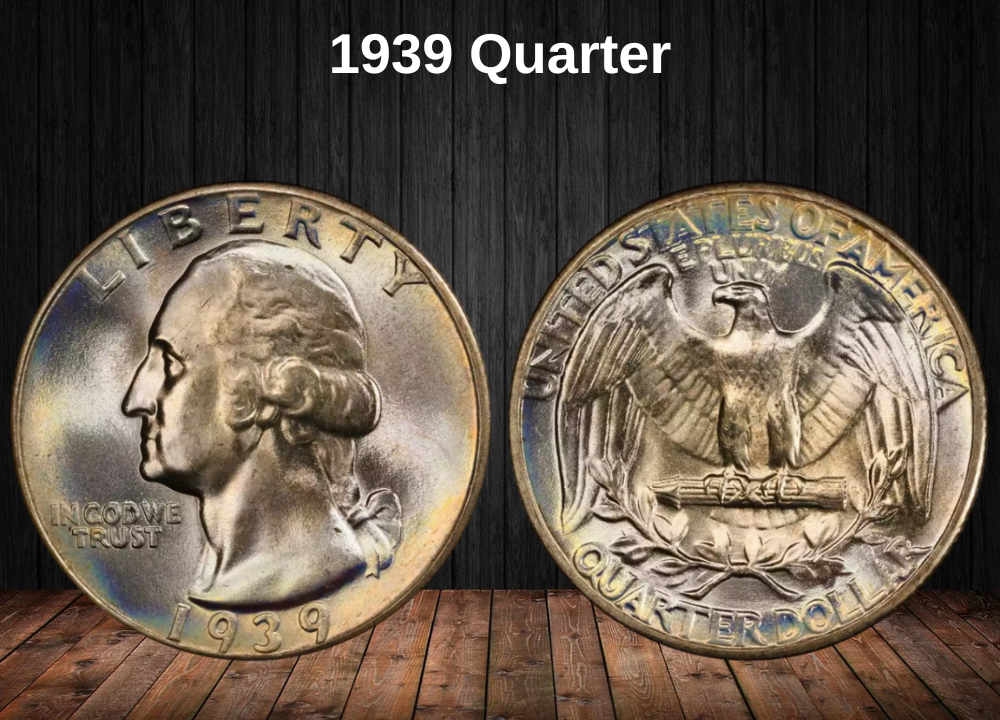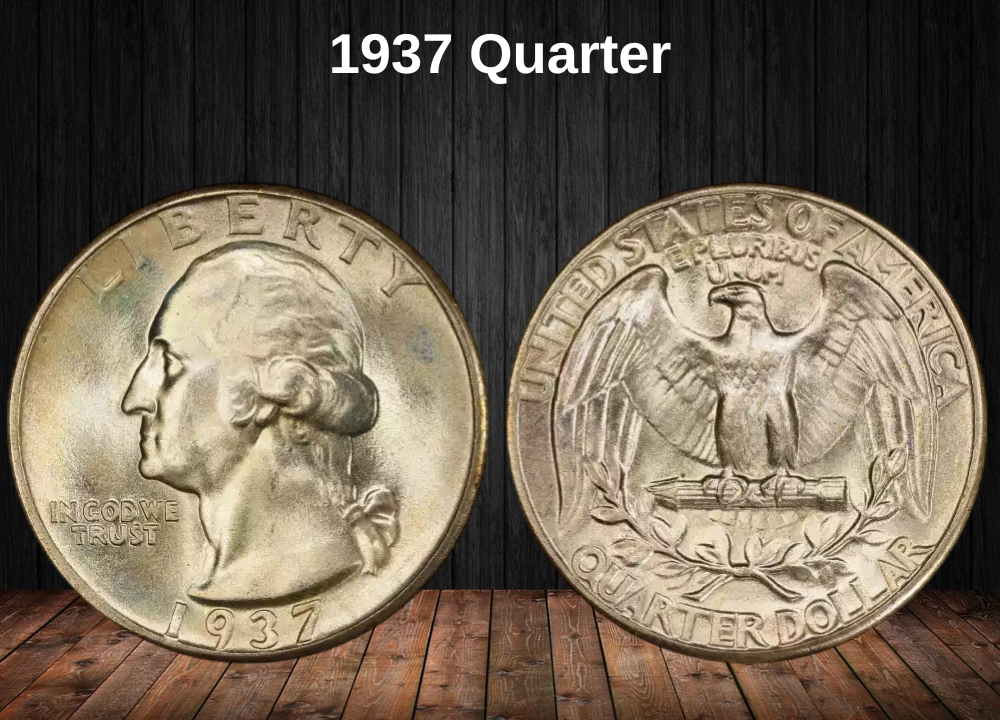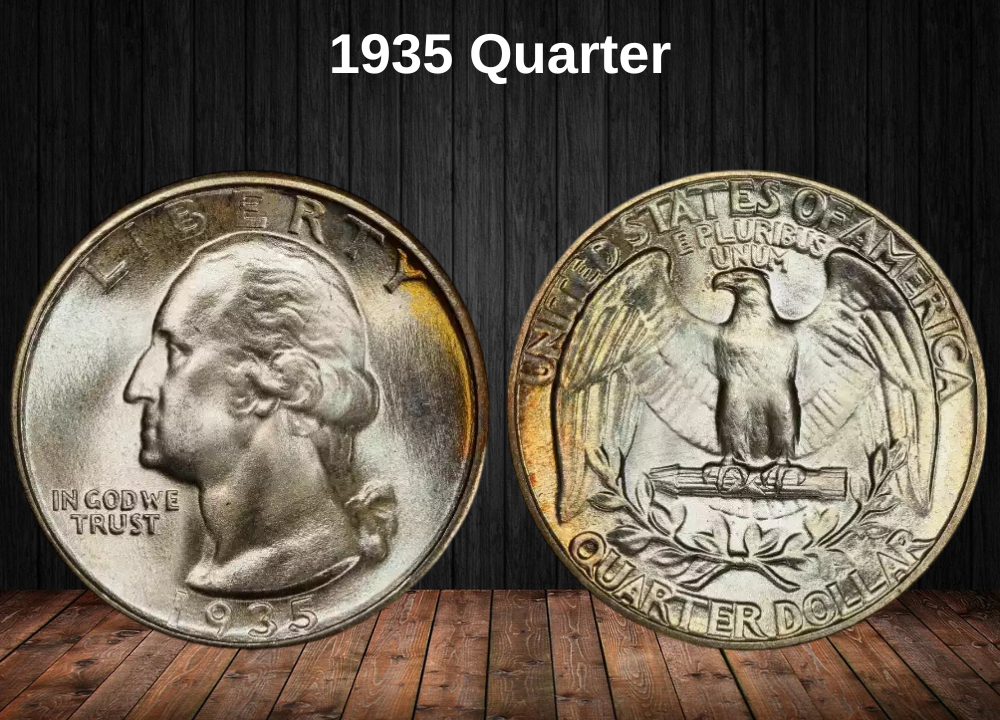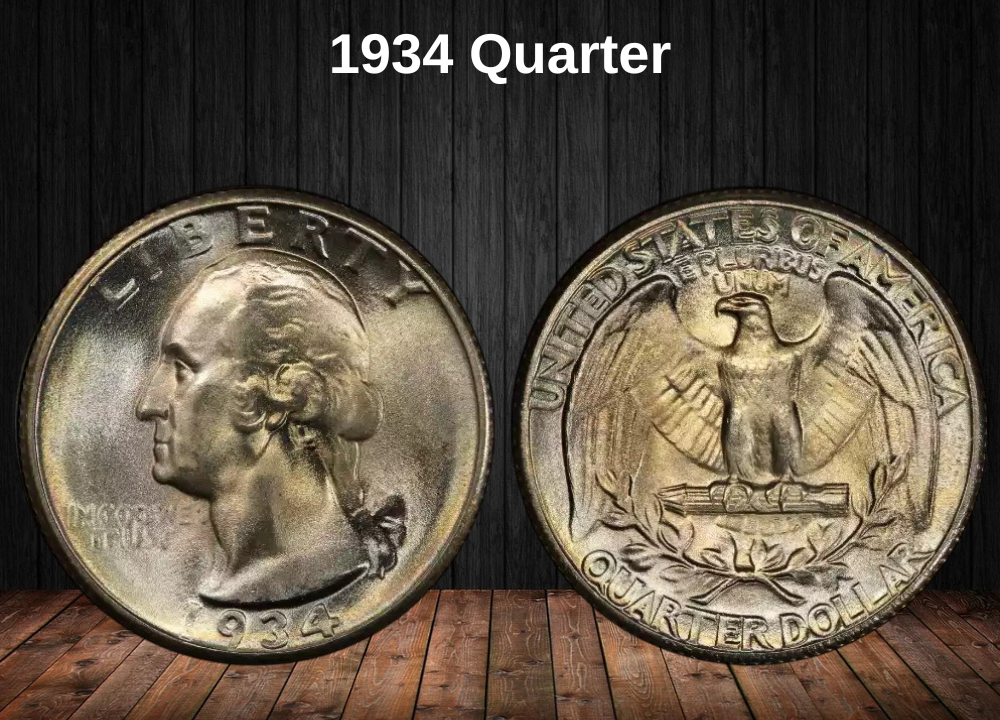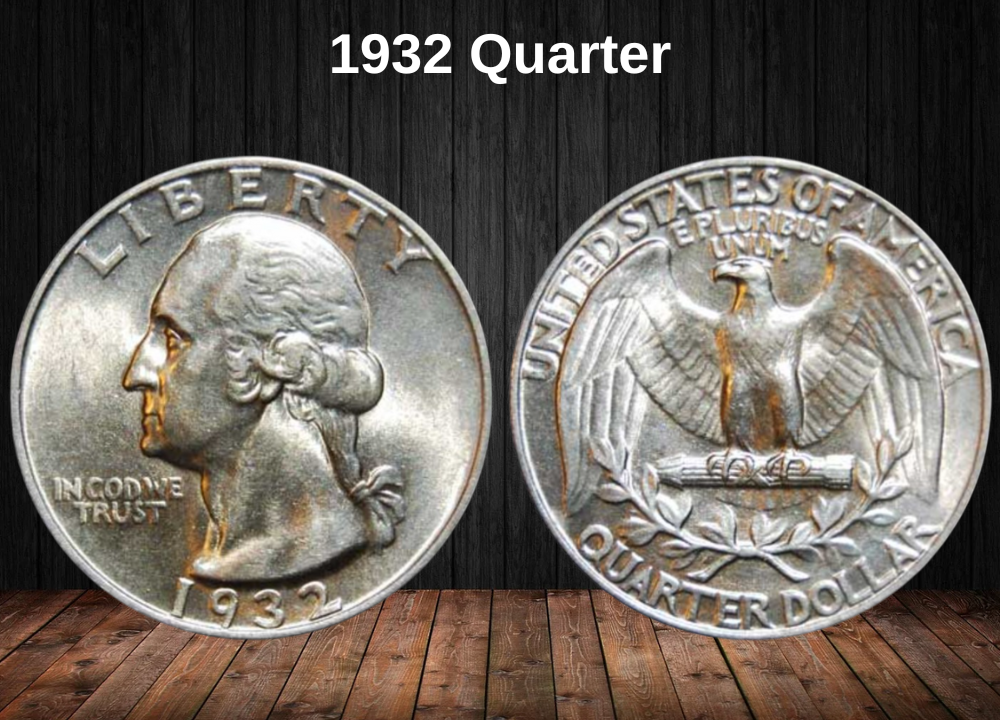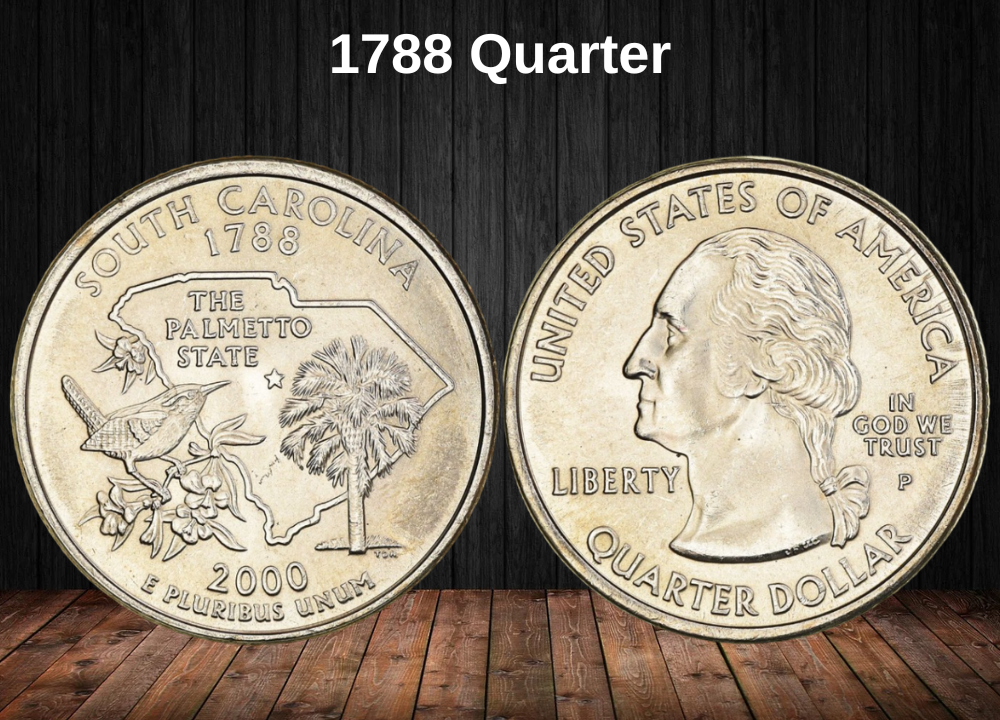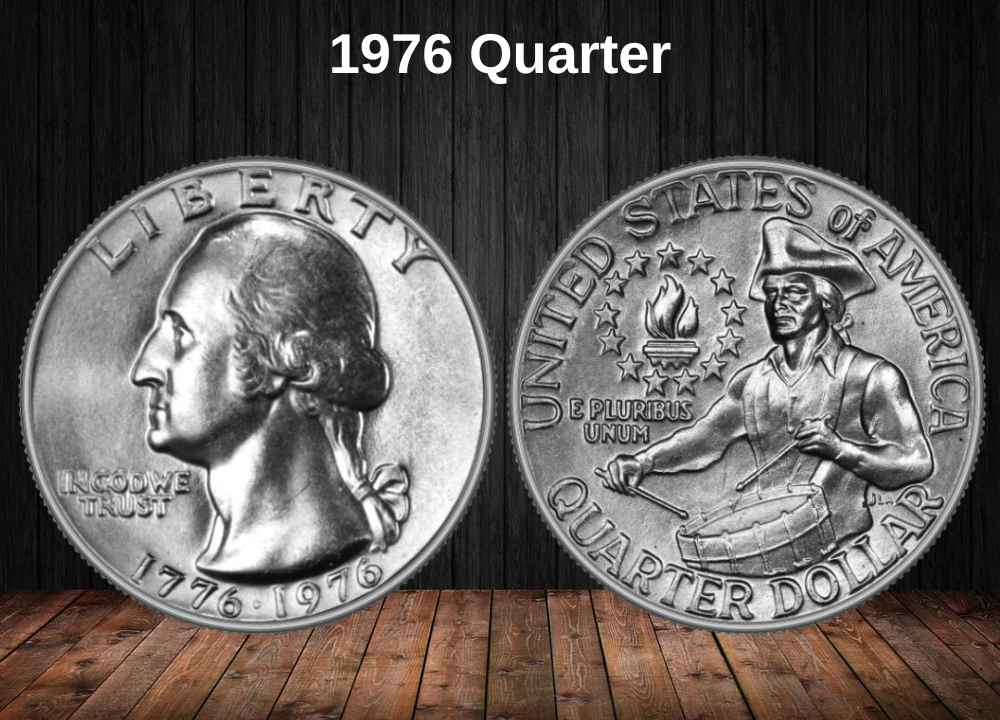The 1961 Washington Quarter continues the tradition of 90% silver coinage that would end just four years later in 1964. Struck during the height of the Cold War, these coins carry both their intrinsic silver worth and a strong numismatic appeal.
Circulated examples generally trade close to silver melt, around $6.00–$6.17, but higher-grade coins reveal their collector premium. Mint State examples climb into the $25–$27 range, with the Denver issue slightly outperforming Philadelphia in auction records.
Proofs from 1961 reflect the Mint’s improving techniques, and while standard proofs remain affordable, Cameo and especially Deep Cameo (DCAM) examples are in growing demand. A Deep Cameo proof can reach $43.67, more than double the price of a regular proof.
For collectors, the 1961 quarter is an attractive mix of silver value, historical context, and accessible entry points across business strikes and proofs.
1961 Quarter Value By Variety
| Type | Good | Fine | AU | MS | PR |
|---|---|---|---|---|---|
| 1961 No Mint Mark Quarter Value | $6.00 | $6.17 | $7.00 | $25.33 | — |
| 1961-D Quarter Value | $6.00 | $6.17 | $7.00 | $26.67 | — |
| 1961 Proof Quarter Value | — | — | $4.00 | — | $17.44 |
| 1961 CAM Quarter Value | — | — | — | — | $21.33 |
| 1961 DCAM Quarter Value | — | — | — | — | $43.67 |
History of the 1961 Quarter
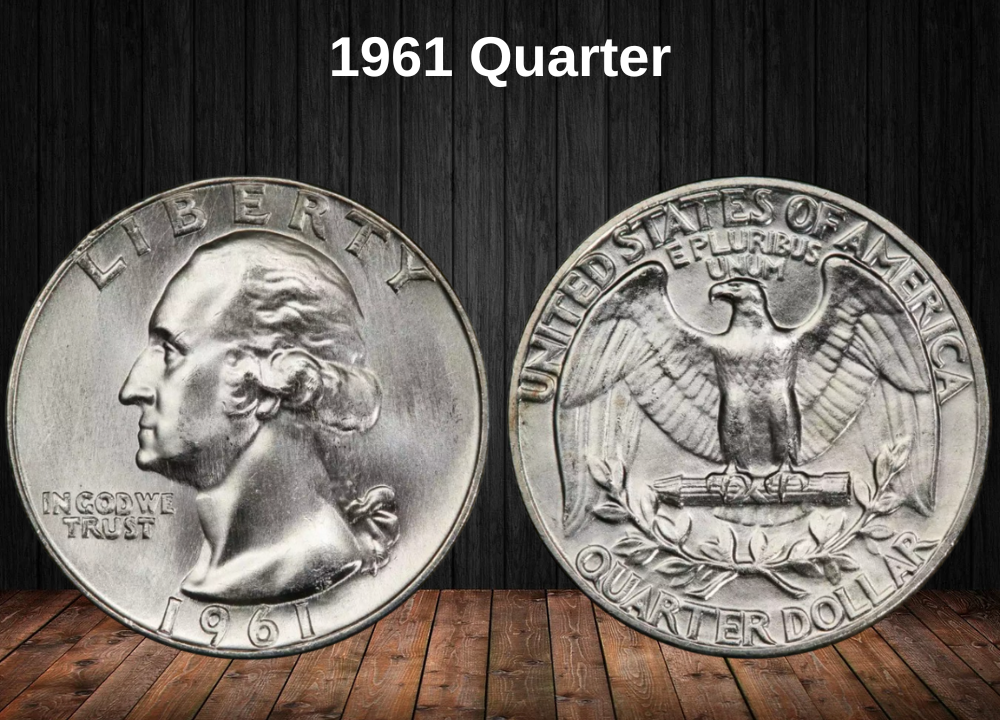
The Washington Quarter was first introduced in 1932 to commemorate the bicentennial of George Washington’s birth. Designed by sculptor and engraver John Flanagan, the coin replaced the beloved Standing Liberty Quarter (1916–1930) and quickly became a permanent fixture of American coinage.
The Bicentennial Committee originally recommended Laura Gardin Fraser’s elegant design, adapted from her work on the Washington Bicentennial medal. While many praised her artistry, Treasury Secretary Andrew Mellon ultimately selected Flanagan’s version instead. His choice set the design that would remain on the quarter’s obverse and reverse for over six decades.
When first released in August 1932, Washington quarters were struck in 90% silver and 10% copper, a standard that continued until 1964 when rising silver prices forced the U.S. Mint to adopt copper-nickel clad coinage. The 1961 issue thus belongs to the last era of silver quarters—highly sought after both for their silver content and historical significance.
By 1961, the Washington quarter had been circulating for nearly three decades, cementing itself as one of the most familiar coins in American pockets. Its symbolism reflected the country’s shift toward honoring real historical figures rather than allegorical images, a change that began in 1909 with Abraham Lincoln’s cent. Washington became the second real person to appear on U.S. coinage, breaking from the longstanding tradition of using Liberty personifications or classical motifs.
The 1961 quarter carries the weight of both history and transition: still struck in silver, still bearing Flanagan’s original design, and still circulating widely during the Cold War years when American coinage symbolized strength, stability, and national identity.
Key Features of the 1961 Quarter
John Flanagan’s iconic Washington quarter design continued unchanged into 1961, reflecting the steady production of U.S. coinage during America’s prosperous early 1960s period.
Both the Philadelphia and Denver mints struck business-strike quarters in 1961, while Philadelphia also produced proof coins exclusively. This year still carried the traditional 90% silver / 10% copper composition, a detail that became increasingly important as silver prices rose in later decades.
Although the 1961 quarters do not display dramatic varieties like some other years, they stand out for their consistent strike quality. Collectors consider the 1961-D quarter an underrated “sleeper” date, since it becomes surprisingly scarce in top grades despite its high mintage.
Obverse of the 1961 Quarter
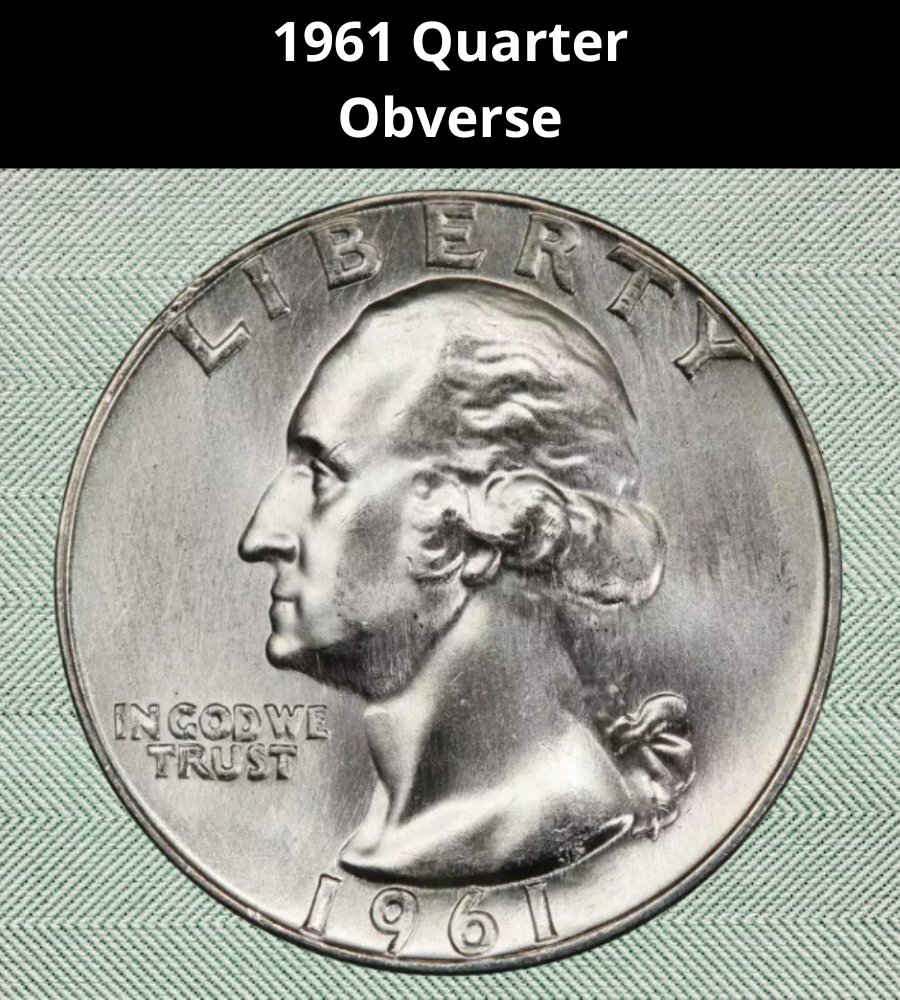
The obverse features George Washington’s bust facing left, with the bold inscription “LIBERTY” along the upper rim. Beneath his chin appears the national motto “IN GOD WE TRUST” (note: sometimes lightly struck). The date “1961” anchors the design at the bottom rim.
Compared with the detailed reverse, the obverse is clean and minimalistic in style.
Reverse of the 1961 Quarter
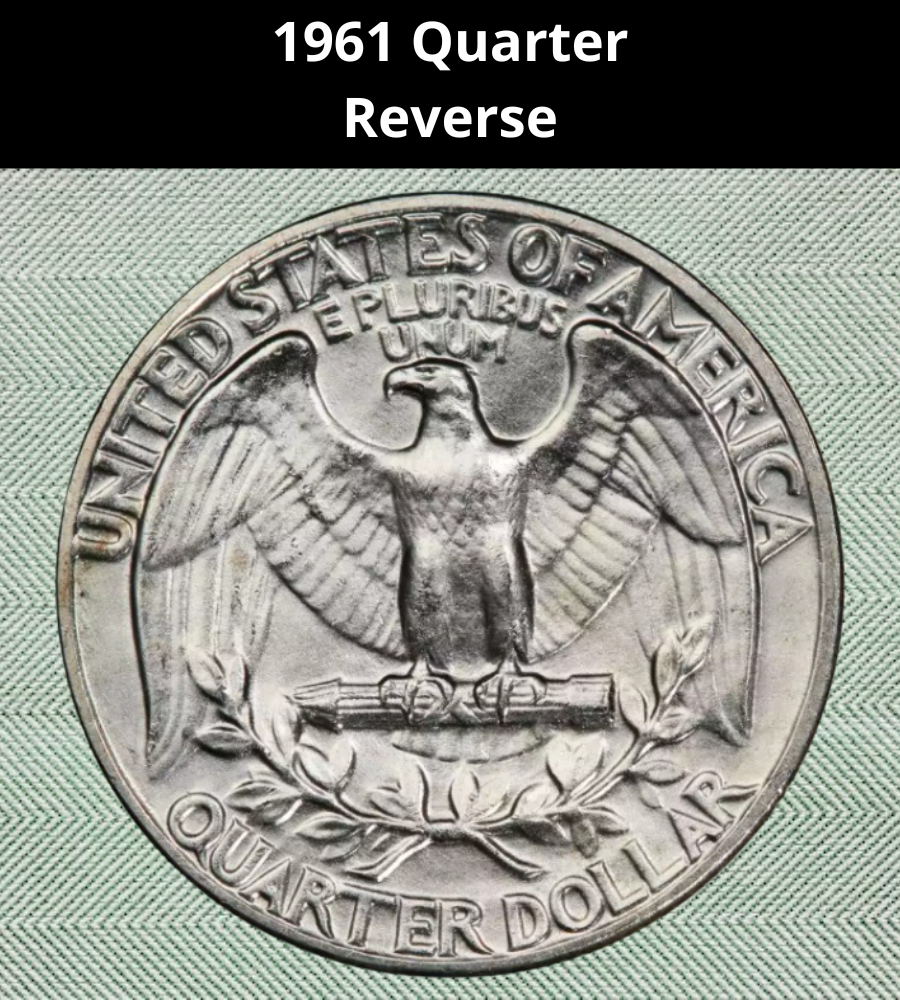
The reverse shows a powerful American Bald Eagle with wings outstretched, clutching arrows in its talons. A laurel wreath encircles the eagle’s base, symbolizing strength and victory.
Above the eagle’s head is the Latin motto “E PLURIBUS UNUM” (“Out of many, one”). Along the rim is the bold country name “UNITED STATES OF AMERICA”, while the denomination “QUARTER DOLLAR” rests at the bottom.
Other Specifications
- Composition: 90% silver, 10% copper
- Weight: 6.26 grams
- Diameter: 24.3 mm
- Thickness: 1.75 mm
- Edge: Reeded
- Face Value: $0.25
- Silver Weight: 0.1808 troy oz.
Mintage (1961)
- Philadelphia: Part of total 120,692,929 (including proofs)
- Denver: Highest mintage for the year
- San Francisco: No quarters struck (Mint inactive 1955–1964)
1961 Quarter Grading & Value Overview
| Grade / Type | Description | Approximate Value |
|---|---|---|
| Circulated (G–XF) | Widely used in commerce, heavy wear. | Silver melt value ≈ $6–$7 |
| Uncirculated (MS60–MS63) | Mint State examples with minor marks, attractive luster. | Premium above silver value |
| High Uncirculated (MS65–MS67) | Scarcer in top condition, especially 1961-D. | Significant premiums; sleeper date in high grade |
| Proof (PR) | Struck in Philadelphia only, mirror surfaces. | Common, modest premiums |
| Proof CAM (Cameo) | Strong contrast between frosted devices and mirrored fields. | Affordable entry point into specialized collecting |
| Proof DCAM (Deep Cameo) | Bold frosted contrast, highly desirable. | Higher but still accessible premiums |
1961 Quarter Value Guides
1961 No Mint Mark Quarter Value
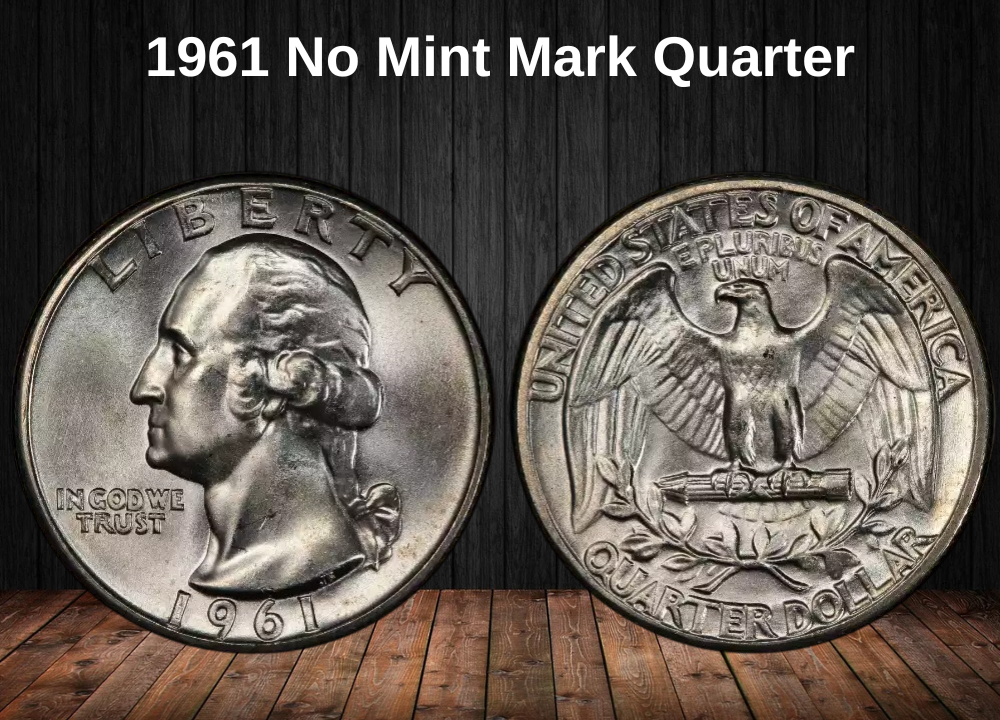
The 1961 Washington quarter without a mint mark, struck at the Philadelphia Mint, represents the smaller mintage between the two business-strike issues of that year. Only about 37 million coins were produced in Philadelphia, compared with more than 83.7 million from Denver.
Even with this lower production, Philadelphia’s 1961 quarters remain relatively easy to locate in most circulated and mid-grade conditions, ranking around 50th in overall rarity for the Washington quarter series.
What sets them apart is their sharp, consistent strikes and smooth planchets, hallmarks of the Philadelphia Mint’s quality during the early 1960s. The challenge arises at the higher levels: examples certified MS65 or better become notably scarce and can bring strong premiums compared to average circulated pieces.
1961 No Mint Mark Quarter – Price by Grade
(Based on the Sheldon 1–70 scale, including the latest auction records)
| Grade (1–70) | Condition Description | Approx. Value |
|---|---|---|
| G4 – VG8 | Heavily worn, major details visible but faint. | $6 – $7 |
| F12 – VF20 | Moderate wear, most design elements still clear. | $7 – $8 |
| EF40 – AU50 | Light circulation, strong detail remains. | $9 – $12 |
| MS60 – MS62 | Uncirculated with contact marks. | $14 – $18 |
| MS63 | Choice Uncirculated, average luster. | $20 – $25 |
| MS64 | Higher eye appeal, fewer flaws. | $35 – $45 |
| MS65 | Gem Uncirculated with strong luster. | $75 – $120 |
| MS66 | Premium quality, scarce in the market. | $250 – $400 |
| MS67 | Virtually flawless, very rare. | $2,500+ |
1961-D Quarter Value
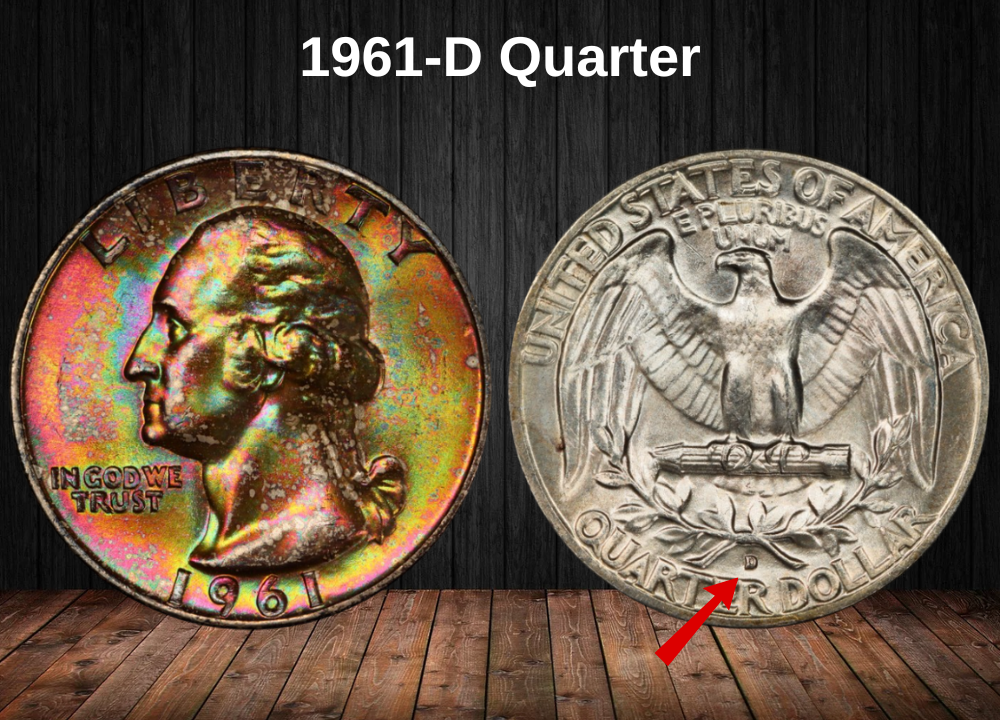
The 1961-D Washington quarter, struck at the Denver Mint, is the most intriguing issue of the year. Although its mintage was the highest—over 83.7 million coins—its true interest lies in its performance in high grades.
This Denver issue ranks 29th in overall rarity for Washington quarters, with a rarity score of 40. The apparent contradiction comes from the coin’s distribution: quarters from Denver were used extensively in everyday commerce across the Western United States, leading to heavier wear and fewer well-preserved examples.
In lower grades the coin is plentiful, but in Gem Uncirculated levels (MS65 and above) it becomes very tough to locate. As a result, top-grade Denver issues often sell for more than their Philadelphia counterparts. While survival rates are broadly similar, the grade distribution skews lower, making pristine examples especially desirable.
1961-D Quarter – Price by Grade
(Based on the Sheldon 1–70 scale, with recent auction data considered)
| Grade (1–70) | Condition Description | Approx. Value |
|---|---|---|
| G4 – VG8 | Heavy circulation, major details worn smooth. | $6 – $7 |
| F12 – VF20 | Moderate wear, lettering and portrait visible. | $7 – $8 |
| EF40 – AU50 | Lightly worn, most details remain strong. | $9 – $12 |
| MS60 – MS62 | Mint State, with noticeable marks. | $14 – $18 |
| MS63 | Choice Uncirculated, decent luster. | $20 – $30 |
| MS64 | Attractive strike with minimal flaws. | $45 – $60 |
| MS65 | Gem Uncirculated, scarce at this level. | $125 – $200 |
| MS66 | High-end strike, very difficult to locate. | $450 – $650 |
| MS67 | Nearly perfect, extremely rare. | $3,000+ |
1961 Proof Quarter Value
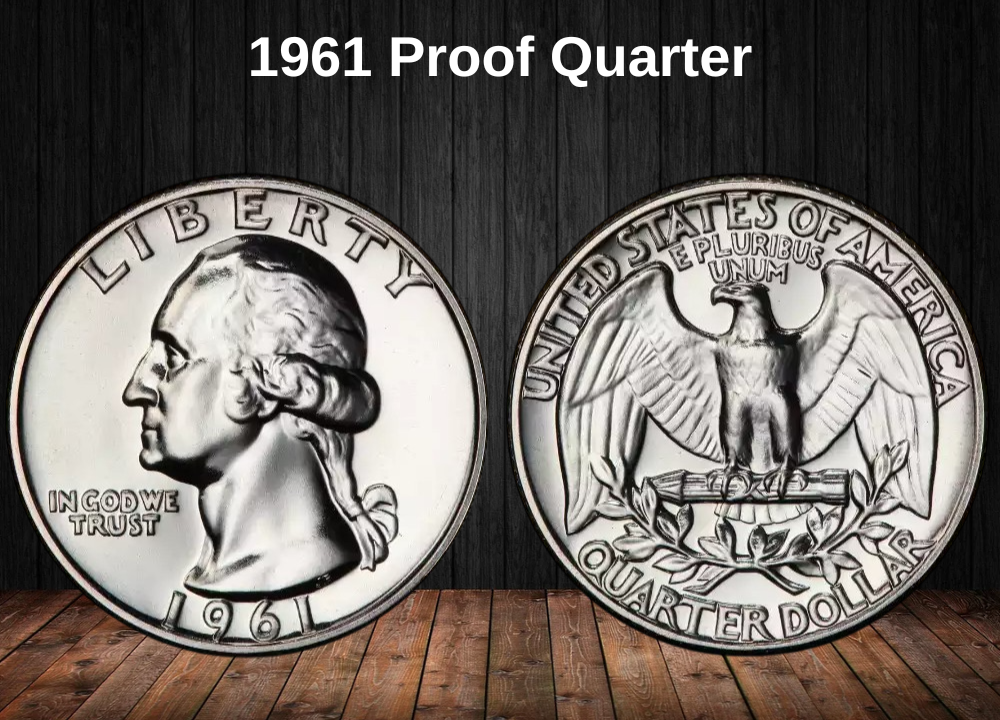
The 1961 Proof Washington quarter, struck at the Philadelphia Mint, was part of that year’s official proof set. Produced using specially polished dies and carefully prepared planchets, these coins display mirror-like fields with sharply defined details. A total of 3,028,244 pieces were issued, and because they were sold directly to collectors, the survival rate is exceptionally high—around 32.7%, the best among all 1961 quarter varieties.
Standard proofs show bright mirrored surfaces and frosted design elements, though they generally lack the strong contrast of Cameo (CAM) and Deep Cameo (DCAM) pieces. The majority of surviving coins fall into the PR63–PR65 range, with higher grades proving increasingly scarce and commanding stronger premiums.
For collectors, the 1961 Proof Quarter offers an affordable and attractive entry point into proof Washington quarters, delivering strong visual appeal at relatively modest prices compared to high-grade business strikes.
1961 Proof Quarter – Price by Grade
(Sheldon 1–70 scale, based on recent auction results)
| Grade (1–70) | Condition Description | Approx. Value |
|---|---|---|
| PR60 – PR62 | Proof with noticeable marks or haze. | $8 – $10 |
| PR63 | Typical proof, reflective but with flaws. | $12 – $15 |
| PR64 | Above-average surfaces, moderate eye appeal. | $18 – $22 |
| PR65 | Gem Proof, sharp mirrors. | $28 – $35 |
| PR66 | High-quality, clean mirrored fields. | $50 – $70 |
| PR67 | Premium example, scarce in this grade. | $120 – $180 |
| PR68 | Exceptional, nearly flawless proof. | $500 – $800 |
| CAM (PR65–PR67) | Frosted contrast on devices, collectible premium. | $150 – $500 |
| DCAM (PR65–PR67) | Strong frosted contrast, very scarce. | $600 – $1,200+ |
1961 CAM Quarter Value
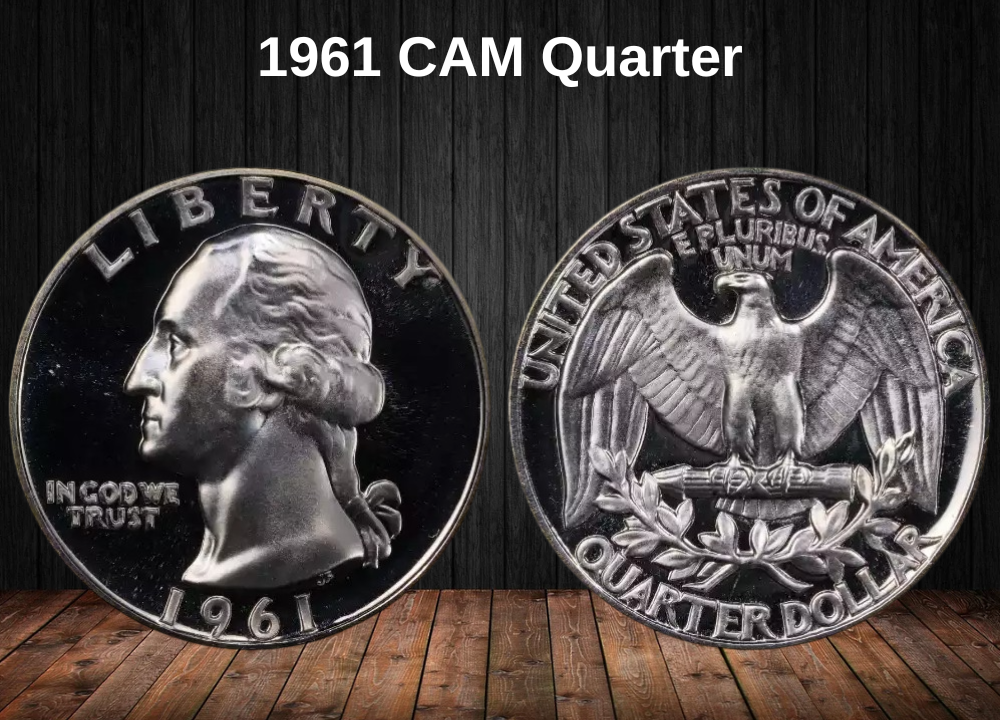
The 1961 Cameo (CAM) Washington quarter is a premium proof variety recognized for its bold visual contrast—frosted design details set against highly reflective mirror fields. This effect was most pronounced when proof dies were newly prepared, giving early strikes their distinctive cameo look that collectors greatly admire.
Because the intensity of frosting varies from coin to coin, only professional grading services can officially certify a quarter as CAM, ensuring it meets the required contrast standard.
Within the Washington quarter series, the 1961 CAM is classified as “Uncommon,” ranking 173rd in overall rarity. Its combination of superior eye appeal and limited availability means it consistently brings stronger prices than standard proof examples.
1961 CAM Quarter – Price by Grade
(Sheldon 1–70 scale, latest auction results included )
| Grade (1–70) | Condition Description | Approx. Value |
|---|---|---|
| PR64 CAM | Noticeable cameo contrast, light imperfections. | $50 – $75 |
| PR65 CAM | Gem Cameo, sharp frost with strong mirrors. | $100 – $150 |
| PR66 CAM | High-quality cameo, scarce at this level. | $200 – $300 |
| PR67 CAM | Premium cameo, excellent strike, rare. | $400 – $650 |
| PR68 CAM | Exceptional contrast and nearly flawless fields. | $1,000+ |
1961 DCAM Quarter Value
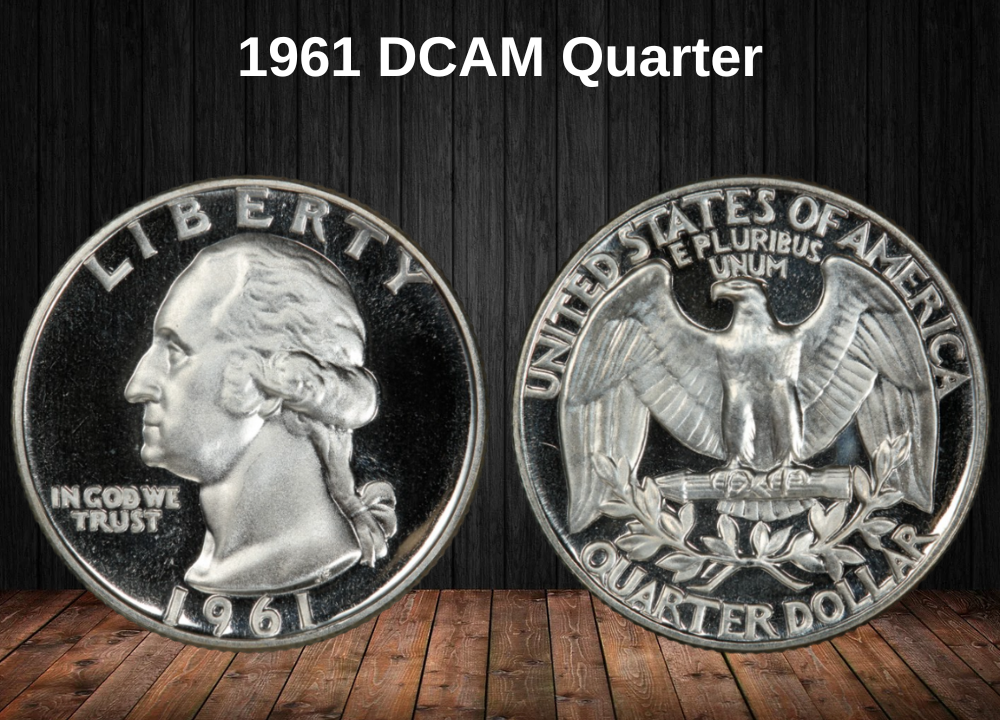
The 1961 Deep Cameo (DCAM) Washington quarter is considered the highest standard of proof quality for this year, showcasing intense contrast between frosted design elements and deeply mirrored fields. The effect gives Washington’s profile and the eagle on the reverse the appearance of “floating” above the coin’s surface.
Only a small fraction of the original 3.03 million proof quarters struck in 1961 earned the DCAM designation, as the minting process at the time did not consistently produce strong contrasts. The U.S. Mint was still refining its proof technology, meaning early strikes were the most likely to display this premium finish.
As a result, 1961 DCAM quarters are far scarcer than standard proofs or even Cameo-designated examples, but they remain attractive to collectors because they offer superior eye appeal while often trading at prices more affordable than later Deep Cameo issues.
1961 DCAM Quarter – Price by Grade
(Sheldon 1–70 scale, with the latest auction data considered)
| Grade (1–70) | Condition Description | Approx. Value |
|---|---|---|
| PR64 DCAM | Solid mirrors and frosted devices, some light marks. | $150 – $250 |
| PR65 DCAM | Gem Deep Cameo, strong eye appeal. | $300 – $450 |
| PR66 DCAM | High-quality example, increasingly scarce. | $600 – $900 |
| PR67 DCAM | Premium Deep Cameo, rare and desirable. | $1,200 – $2,000 |
| PR68 DCAM | Exceptional contrast, virtually flawless. | $3,000+ |
Rare 1961 Quarter Error List
1. 1961-D/D RPM Errors (FS-501 and FS-502)
The 1961-D/D Re-Punched Mint Mark (RPM) varieties are among the most interesting errors from the Denver Mint that year. These mistakes occurred when the “D” mint mark was hand-punched into the die more than once, leaving visible doubling in different positions.
- FS-501: The first “D” appears slightly lower and left, with the secondary punch producing doubling in the upper-right area of the mint mark.
- FS-502: This variety shows a different alignment, where the repunched “D” creates noticeable separation lines and added thickness.
Both varieties can be subtle and require magnification to confirm, but when identified correctly, they are highly collectible. Variety specialists prize these RPMs, and well-preserved examples bring strong premiums compared to normal 1961-D quarters—especially in higher Mint State grades where the doubling is sharpest.
1961-D/D RPM Quarter – Price by Grade
(Sheldon 1–70 scale, including recent auction trends)
| Grade (1–70) | Condition Description | Approx. Value |
|---|---|---|
| G4 – VG8 | Heavily circulated, doubling faint but detectable. | $8 – $12 |
| F12 – VF20 | Moderate wear, mint mark doubling still visible. | $15 – $25 |
| EF40 – AU50 | Light wear, RPM details more distinct. | $40 – $75 |
| MS60 – MS62 | Uncirculated with marks, doubling noticeable. | $90 – $150 |
| MS63 | Choice Mint State, sharper RPM features. | $175 – $225 |
| MS64 | Strong luster, doubling clear. | $275 – $400 |
| MS65 | Gem Mint State, RPM bold and collectible. | $600 – $900 |
| MS66 | Premium gem, rare with clear RPM. | $1,500+ |
2. 1961 DDO FS-101 Errors
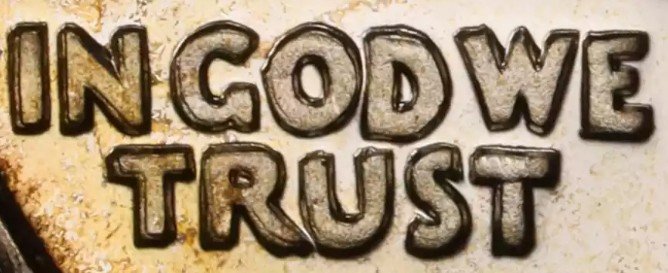
The 1961 Doubled Die Obverse (DDO) FS-101 is one of the standout varieties of the year, showcasing noticeable doubling on both Washington’s portrait and surrounding inscriptions. The doubling is most easily spotted in the motto “IN GOD WE TRUST” and in the digits of the date (1961).
This variety is found across all proof formats—standard Proof (PR), Cameo (CAM), and Deep Cameo (DCAM). The contrast of frosted devices against mirrored fields makes the doubling particularly striking on CAM and DCAM examples, with Deep Cameos bringing the strongest premiums.
Unlike smaller denominations, the larger canvas of the Washington quarter allows the doubling to be viewed more dramatically, giving the FS-101 proof an added level of collector appeal. Value appreciation is most significant in the upper grades: while prices remain modest through PR63, they rise steeply in gem condition, with PR68 examples reaching around $640 at auction.
1961 Proof DDO FS-101 – Price by Grade
(Sheldon 1–70 scale, based on latest auction records)
| Grade (1–70) | Condition Description | Approx. Value |
|---|---|---|
| PR63 | Typical proof with visible doubling, minor marks. | $20 – $30 |
| PR64 | Above-average proof, doubling clear. | $35 – $50 |
| PR65 | Gem Proof, sharp doubling with strong eye appeal. | $70 – $90 |
| PR66 | Premium quality, contrast enhances doubling. | $125 – $175 |
| PR67 | High-end example, scarce. | $250 – $350 |
| PR68 | Nearly perfect proof, dramatic doubling. | $600 – $640 |
Where to Sell Your Quarter Coin?
Now that you know the value of your quarter, the next step is deciding where to sell it. There are several trusted options—both online and in person—that can help you get the best price depending on your coin’s rarity and condition.
To see the full list of recommended places, along with their advantages and disadvantages, check our complete guide on where to sell your quarter coins.
FAQ: 1961 Washington Quarter
1. What is a 1961 Washington Quarter made of?
The 1961 quarter is composed of 90% silver and 10% copper, with a total silver weight of 0.1808 troy ounces.
2. Where were 1961 quarters minted?
- Philadelphia Mint (no mint mark)
- Denver Mint (“D” mint mark on the reverse, right of the ribbon on the wreath)
No quarters were struck at San Francisco that year.
3. How many 1961 quarters were minted?
- Philadelphia: 37,036,000
- Denver: 83,656,928
- Proofs (Philadelphia only): 3,028,244
4. Are 1961 quarters rare?
In circulated condition, they are common. However, high-grade mint state coins (MS-66 and above) and proof Deep Cameos are scarce and valuable.
5. What is the value of a 1961 quarter?
- Silver melt value (base): Around $4–5 (varies with silver price).
- Circulated: $6–10.
- MS-65: $40–60.
- MS-67: $750+ (especially Denver).
- Proof (PR-65): $25–40.
- Proof Deep Cameo (PR-68 DCAM): $2,000+.
6. What varieties or errors should I look for?
- 1961 DDO FS-101 (Proof only): Dramatic doubled die obverse, visible in IN GOD WE TRUST and the date. Premium variety.
- RPM (Repunched Mint Mark) “D/D”: Found on some 1961-D quarters. Collectible error.
- Struck-throughs, off-centers, clipped planchets: Less common but valuable mint errors.
7. How can I tell if I have a Proof 1961 quarter?
Proofs were struck in Philadelphia only and have:
- Mirror-like fields
- Sharp, frosted devices (especially Cameo/Deep Cameo)
- Higher relief and squared rims compared to business strikes.
8. Why do collectors like 1961 quarters?
- They are part of the 90% silver era (ended in 1964).
- Proofs offer beautiful Cameo contrasts.
- Popular doubled die and RPM varieties exist.
- Affordable for beginners, with high-grade examples being challenging for advanced collectors.
9. Should I clean my 1961 quarter?
No. Cleaning reduces value dramatically. Collectors and grading services prefer original surfaces, even with toning.
10. Are 1961 quarters good for investment?
Yes—especially in:
- High-grade MS-67+ coins
- Proof Cameo and Deep Cameo quarters
- Varieties like FS-101 DDO and RPMs
They show consistent demand and price growth in the numismatic market.

